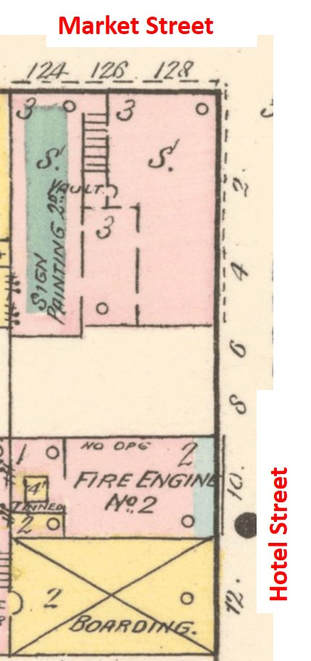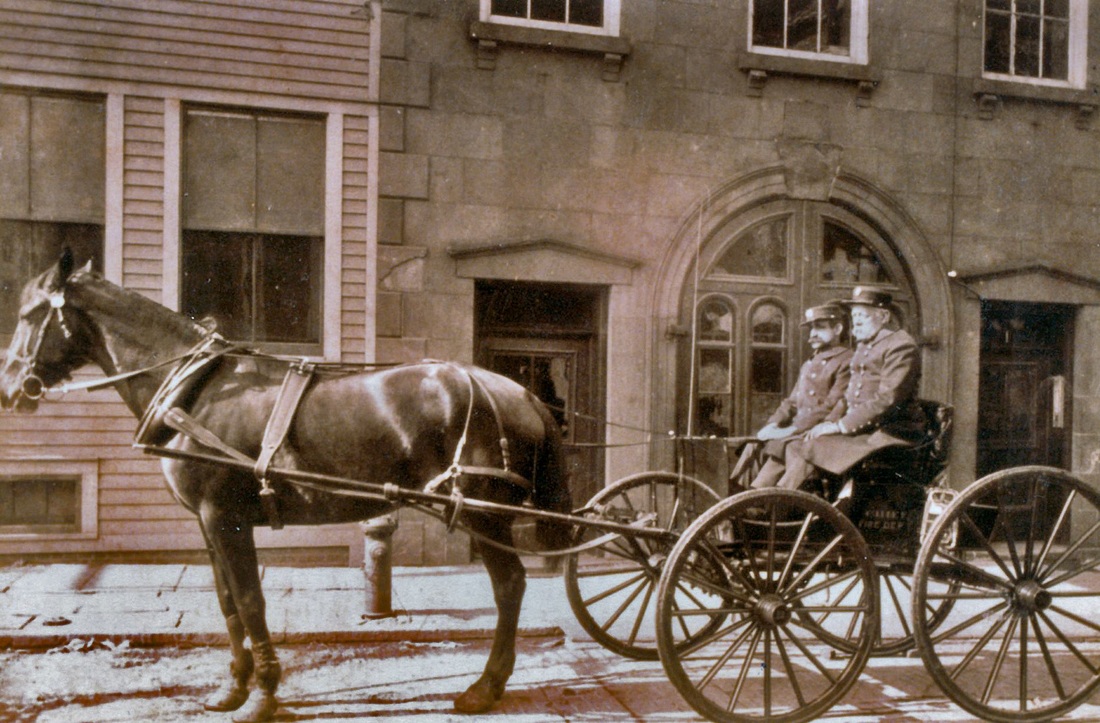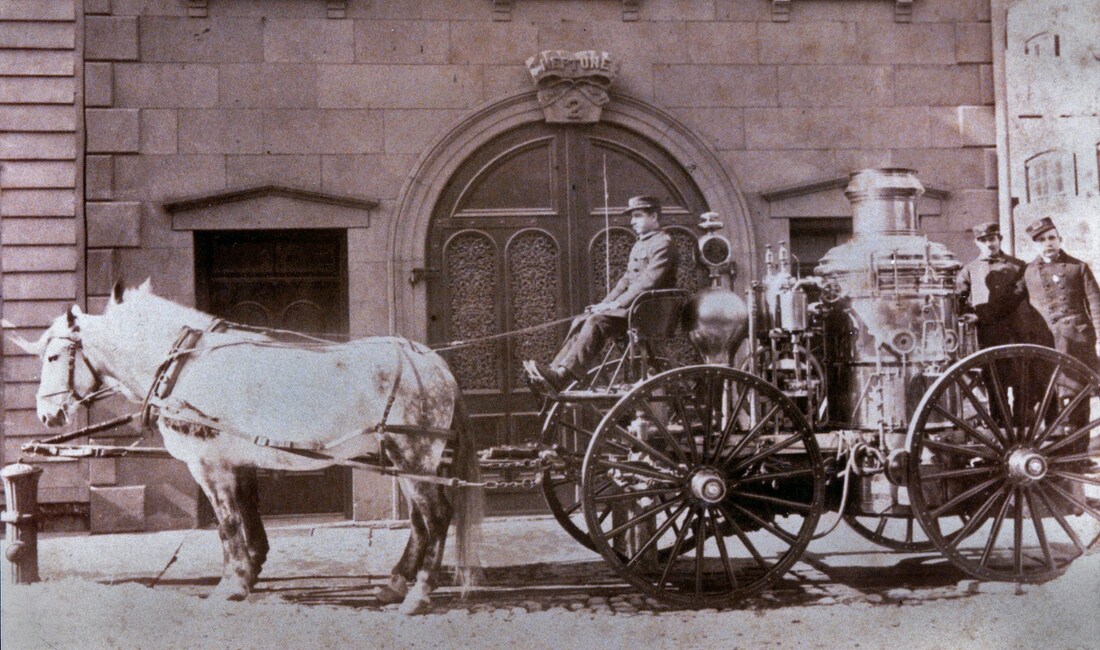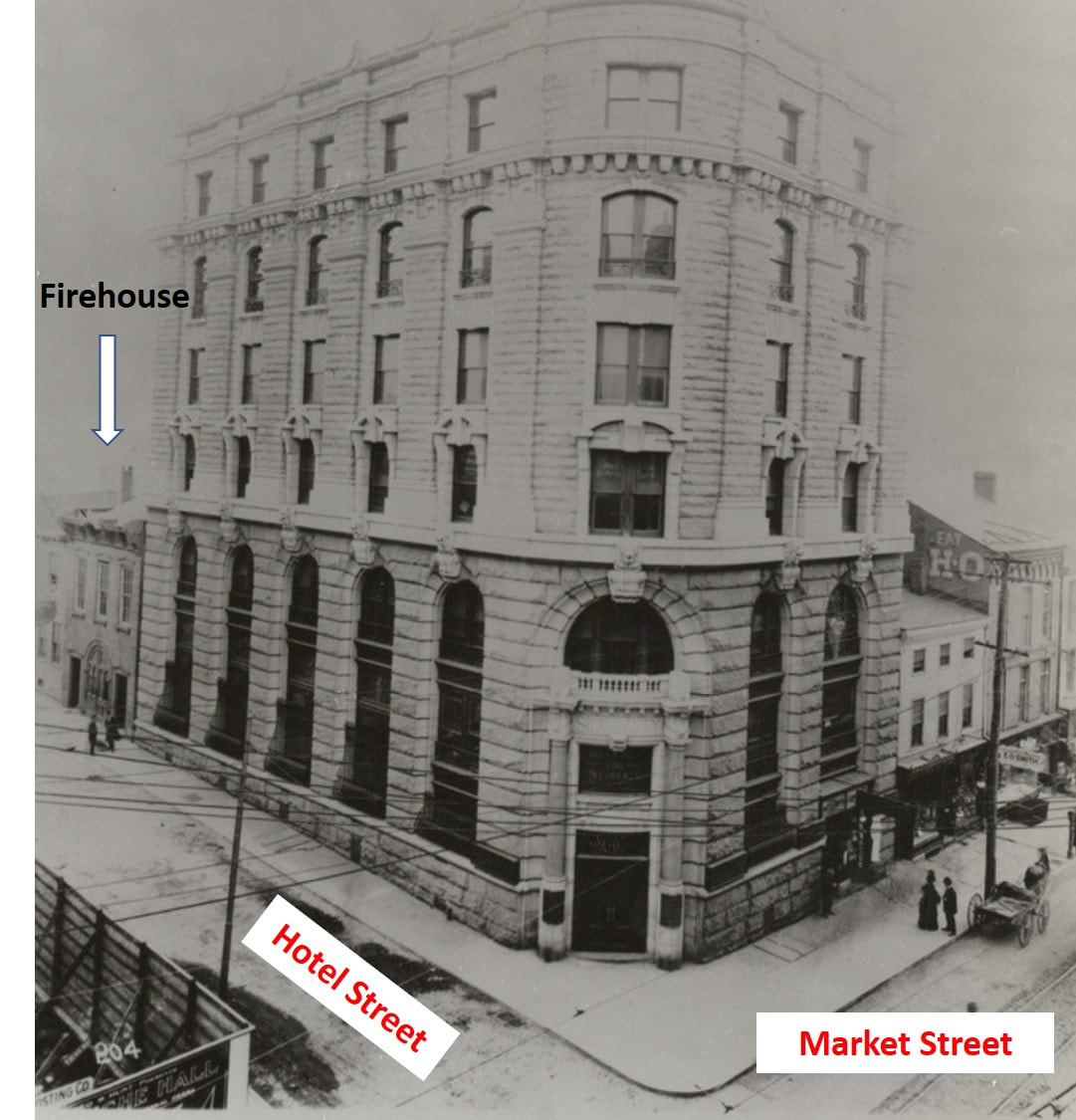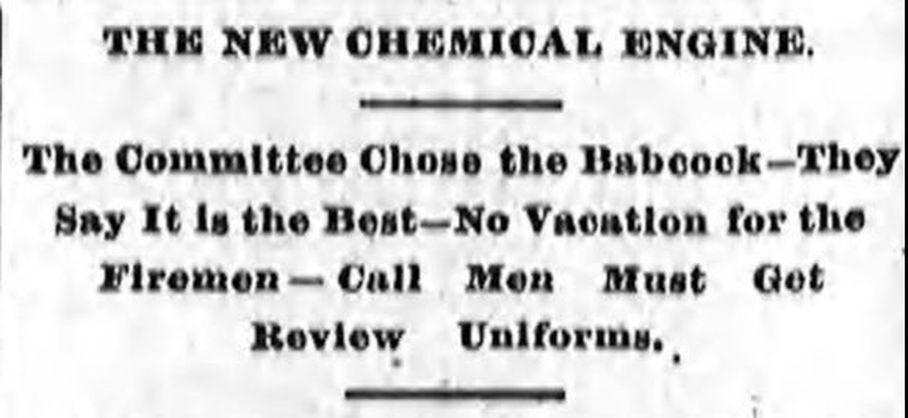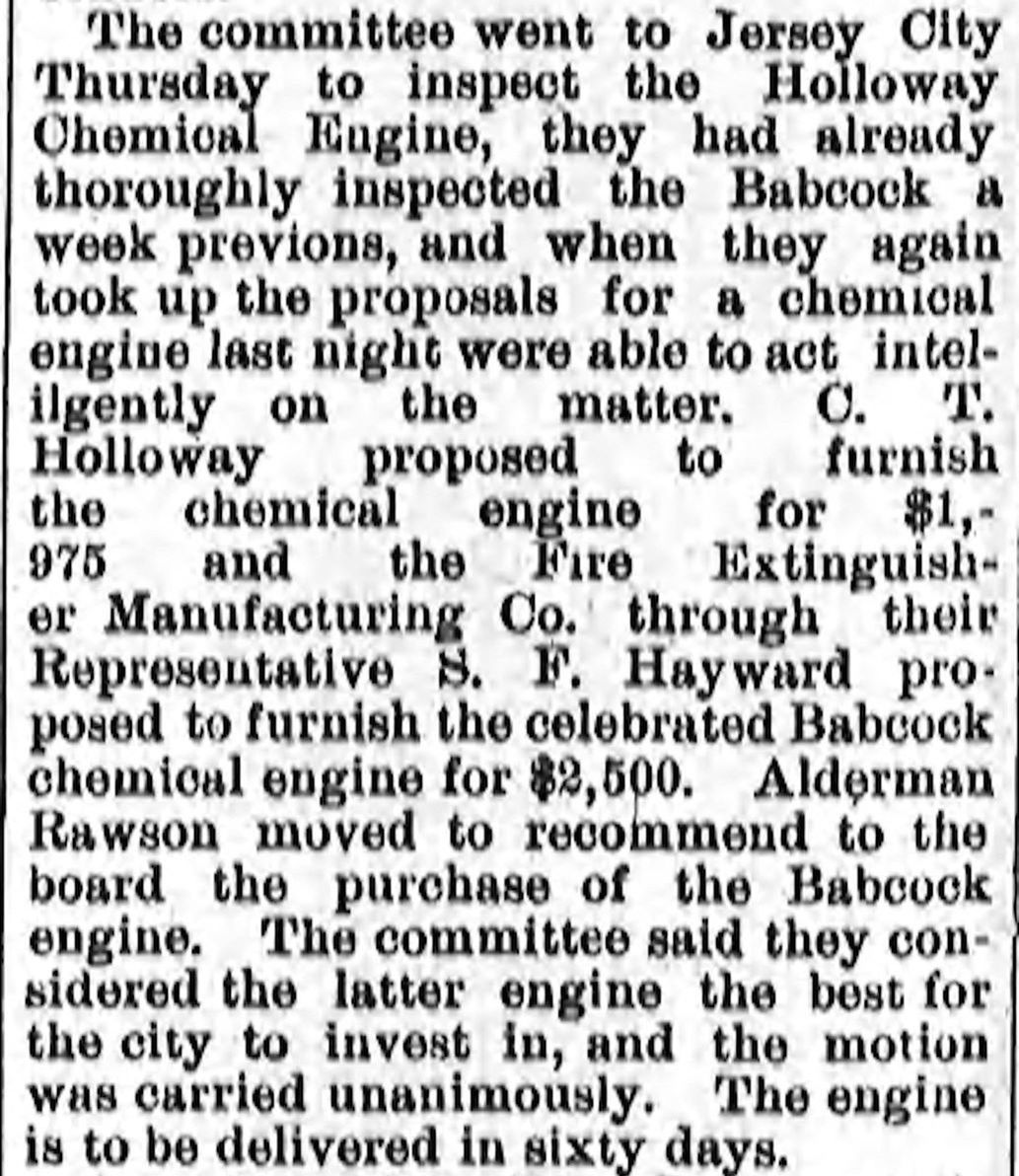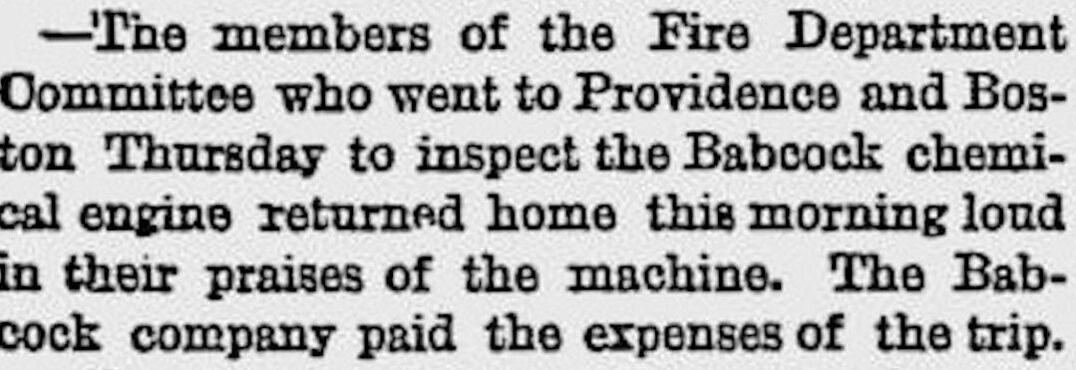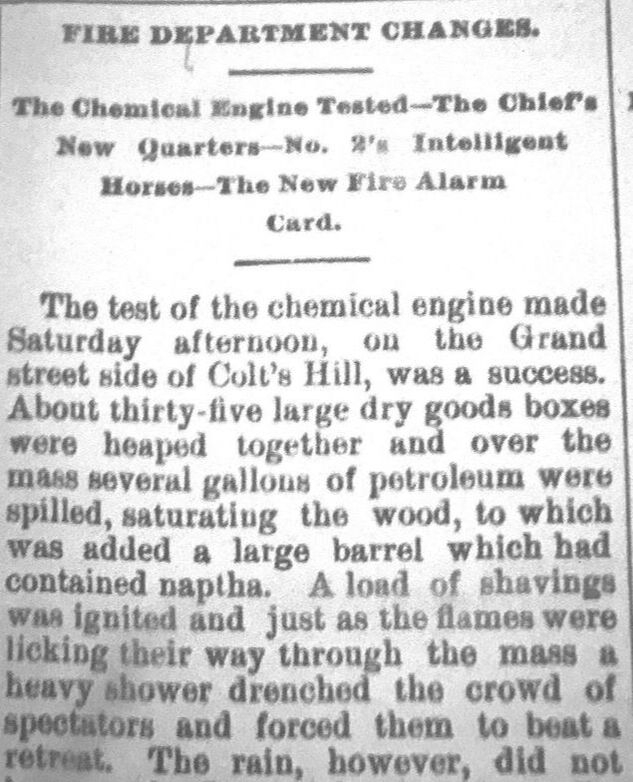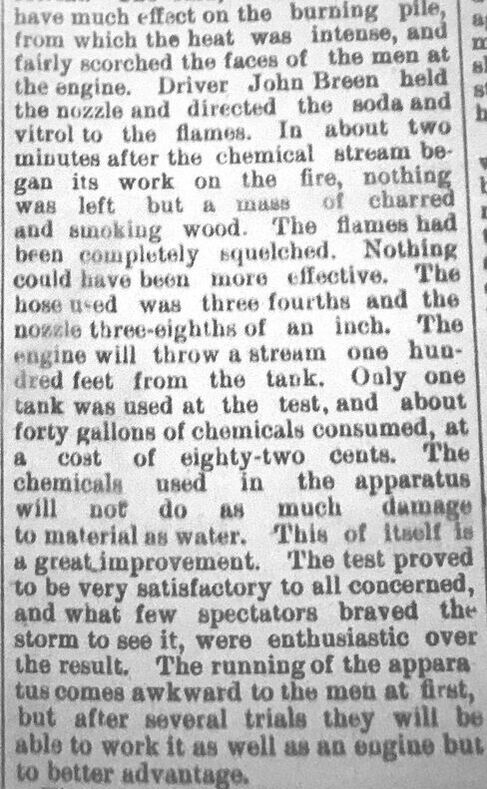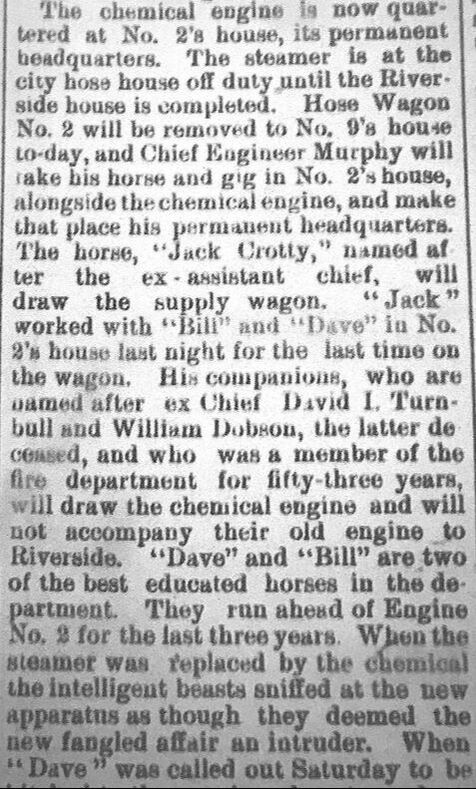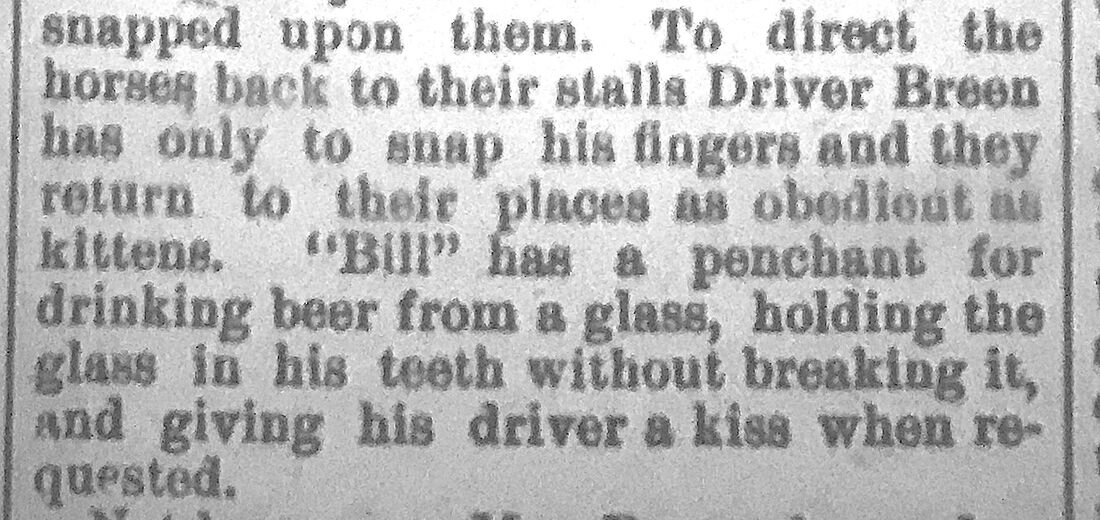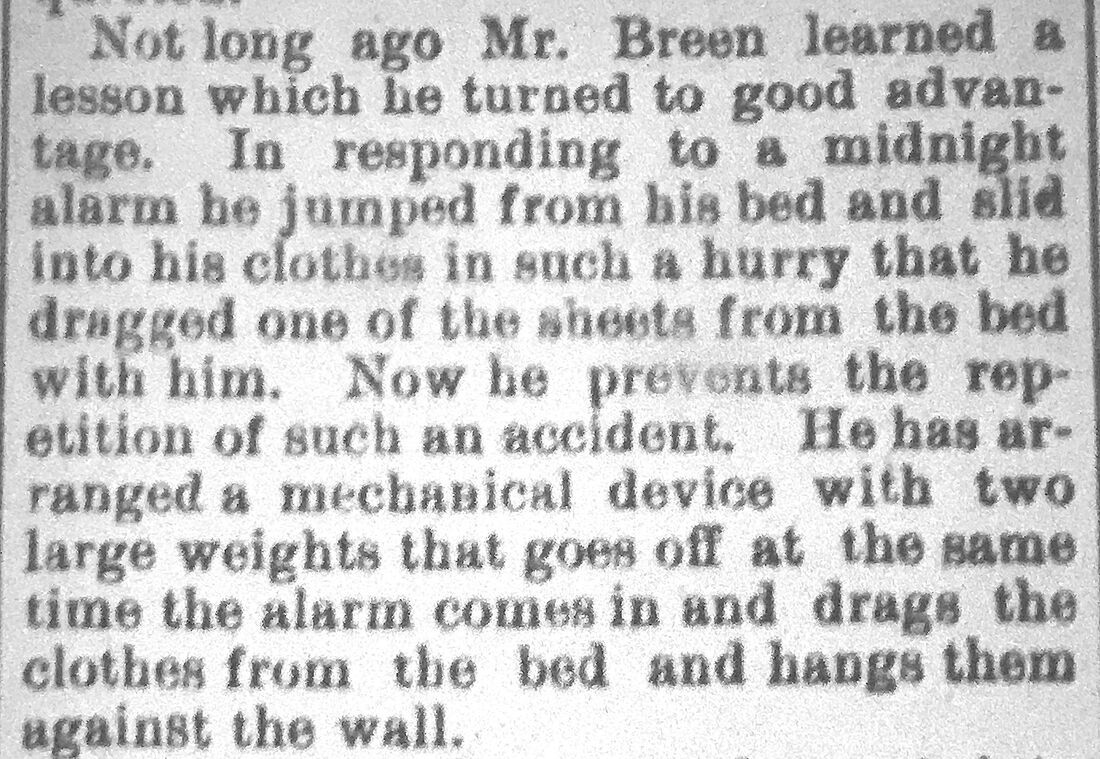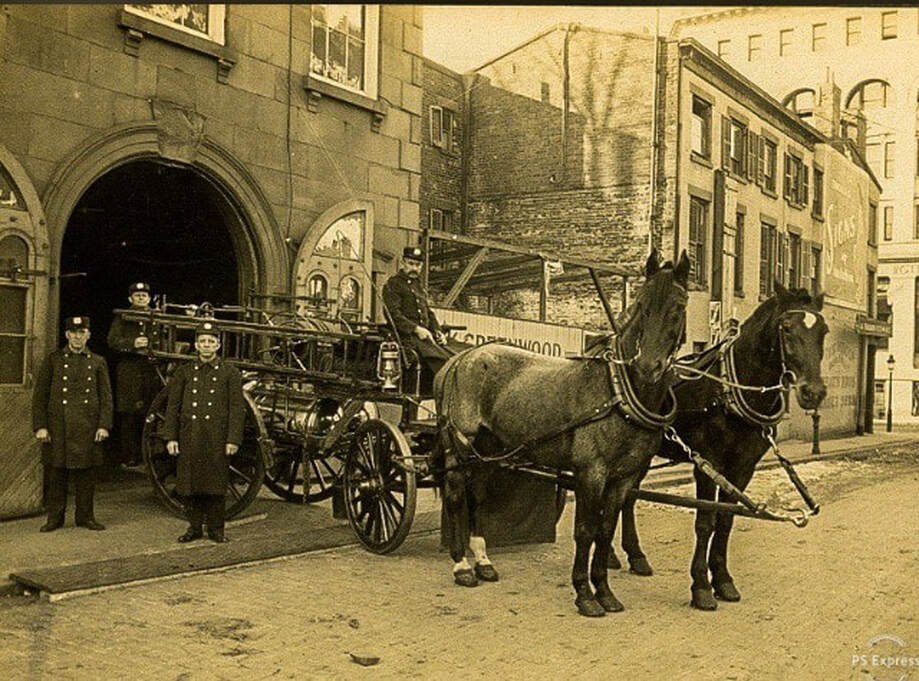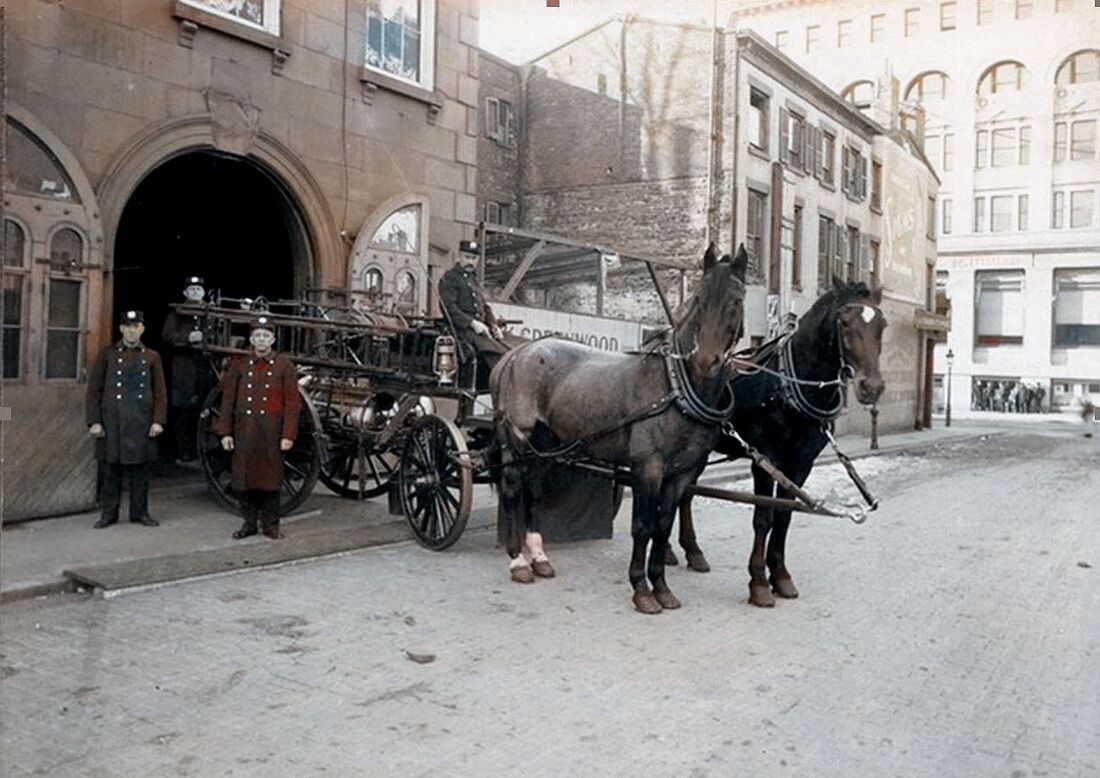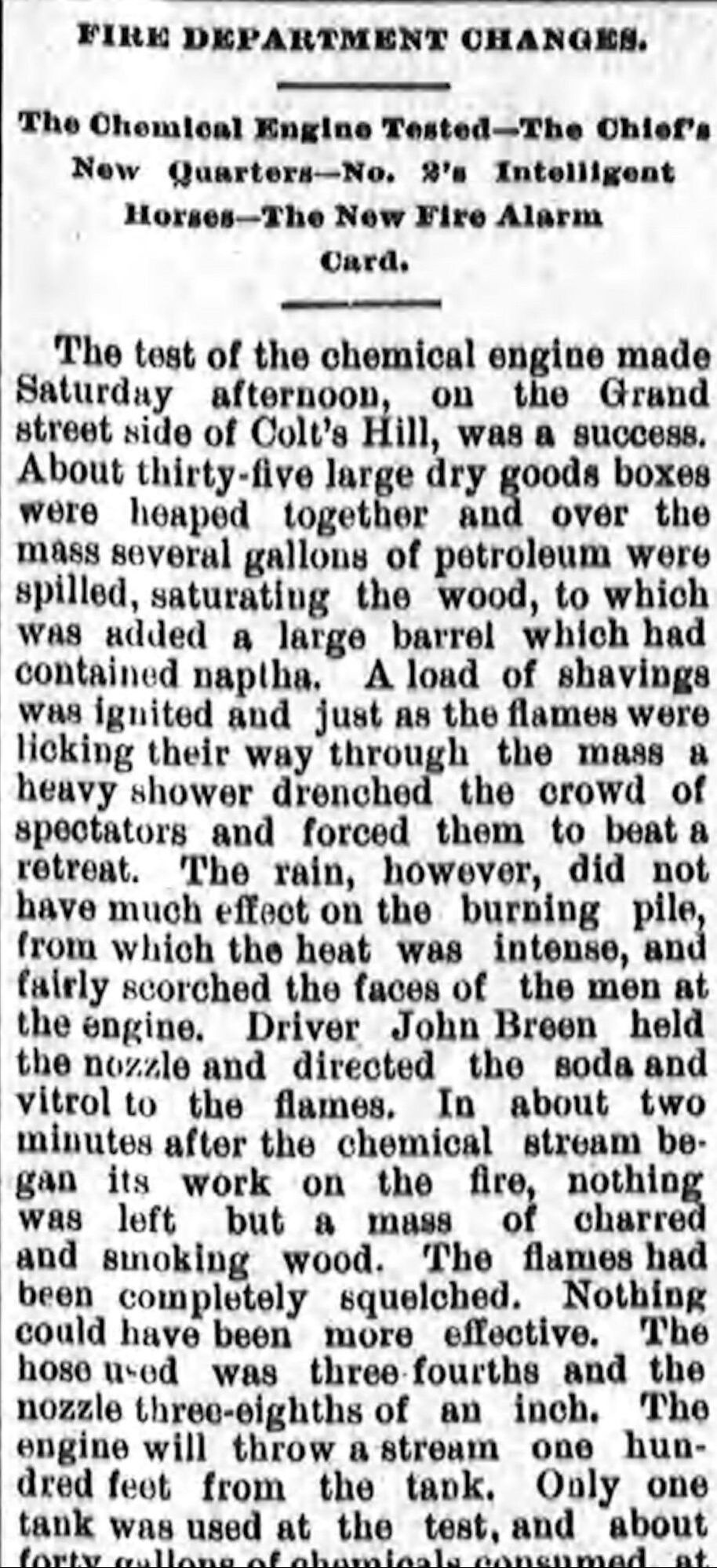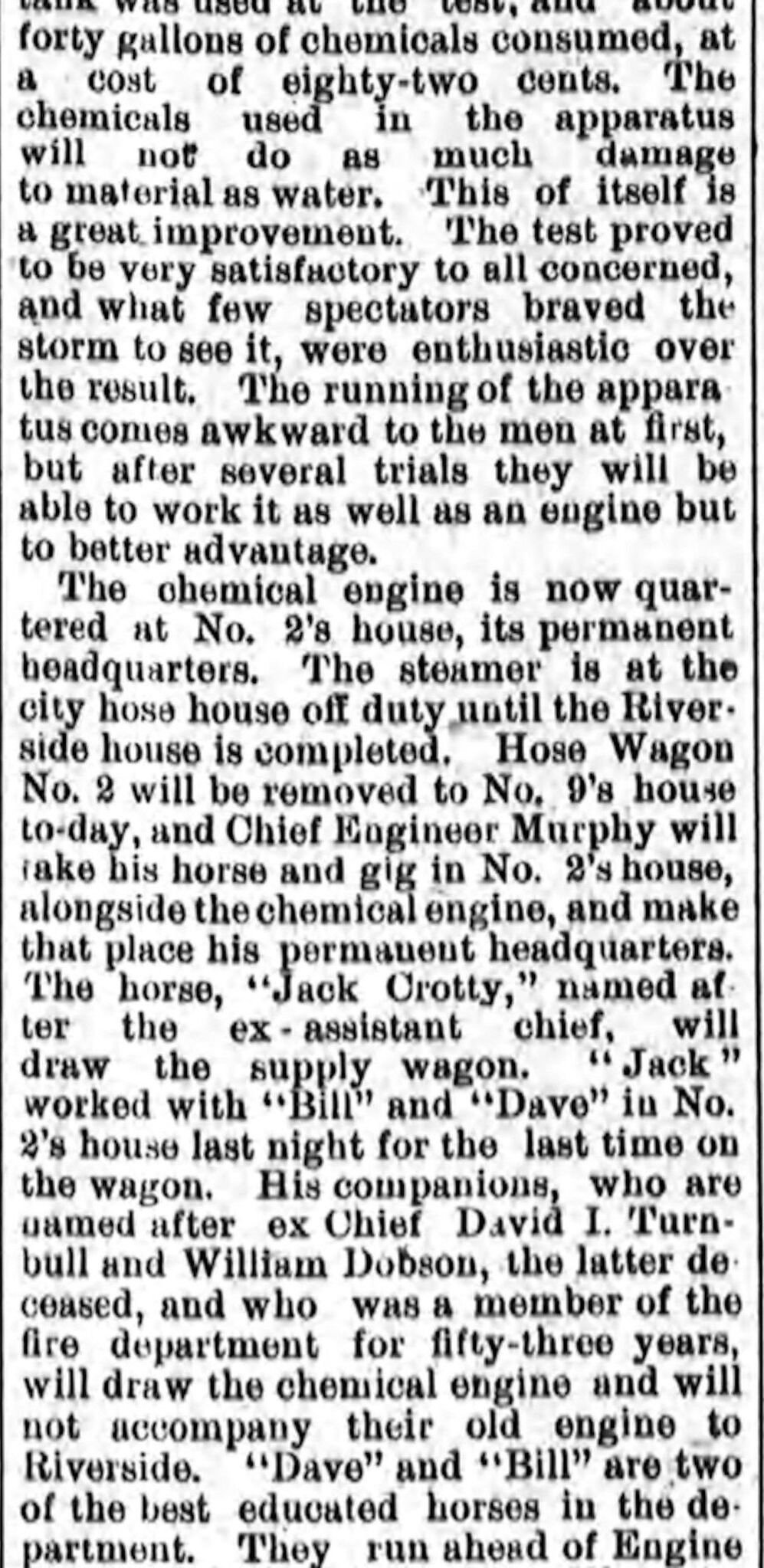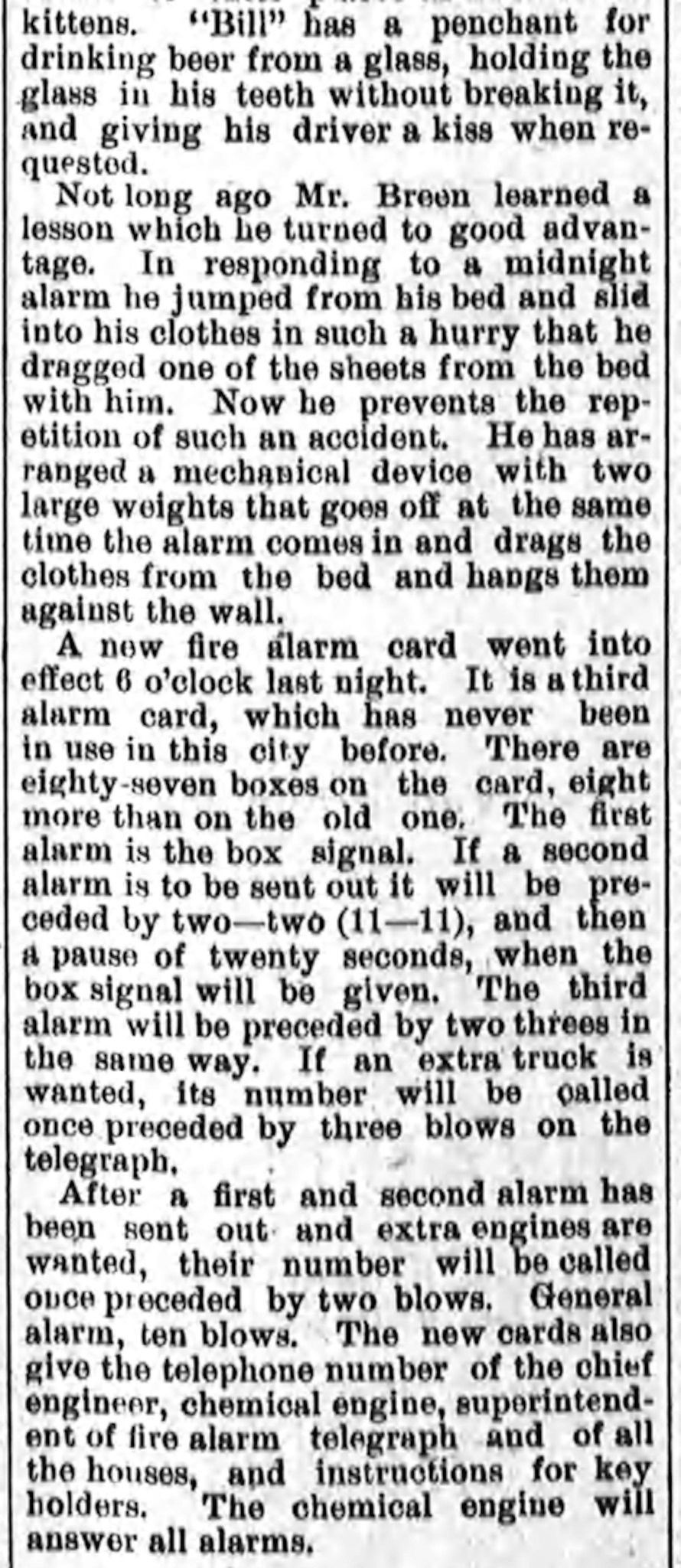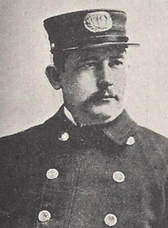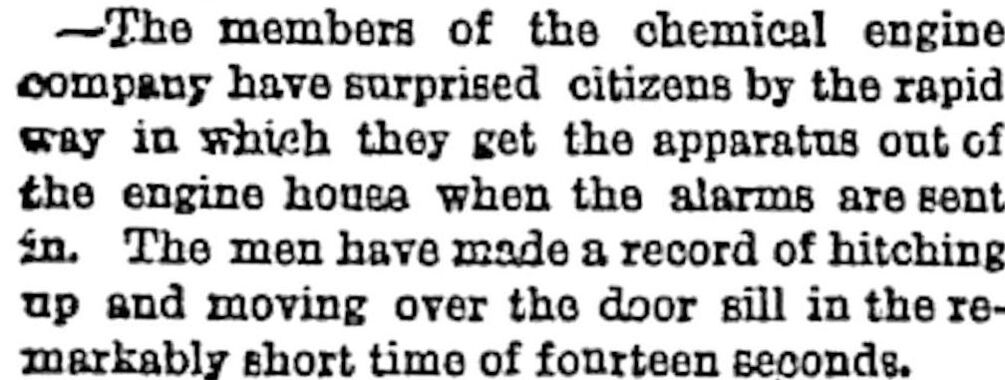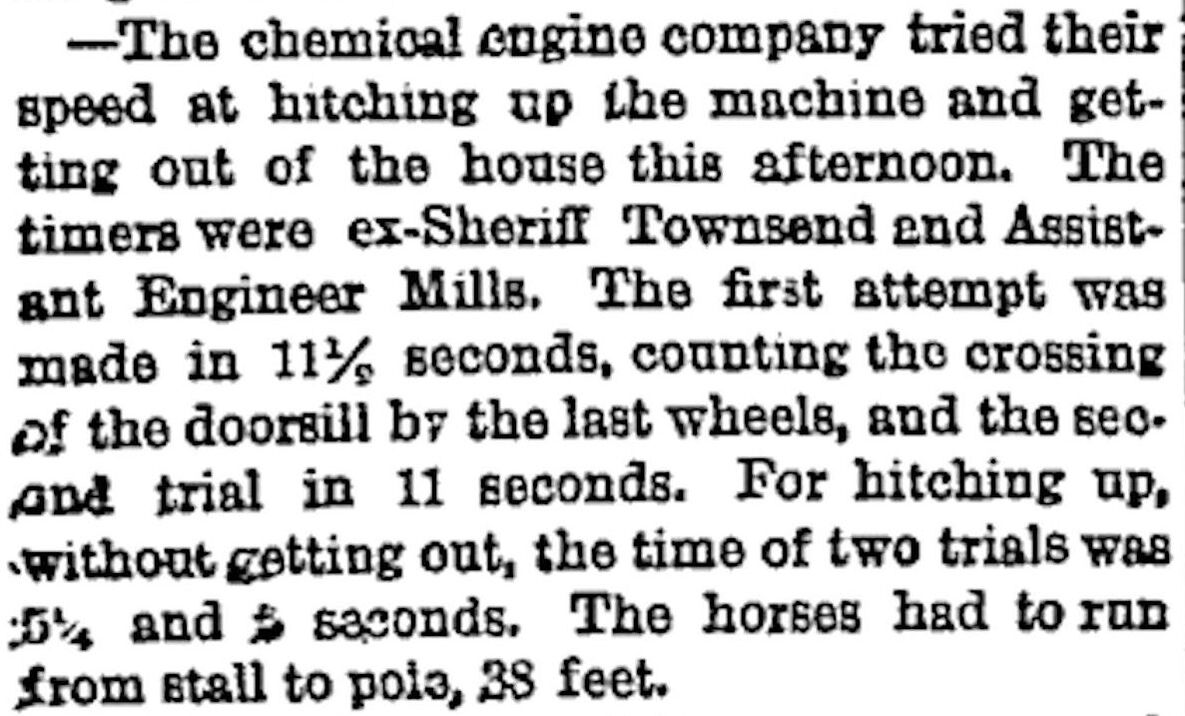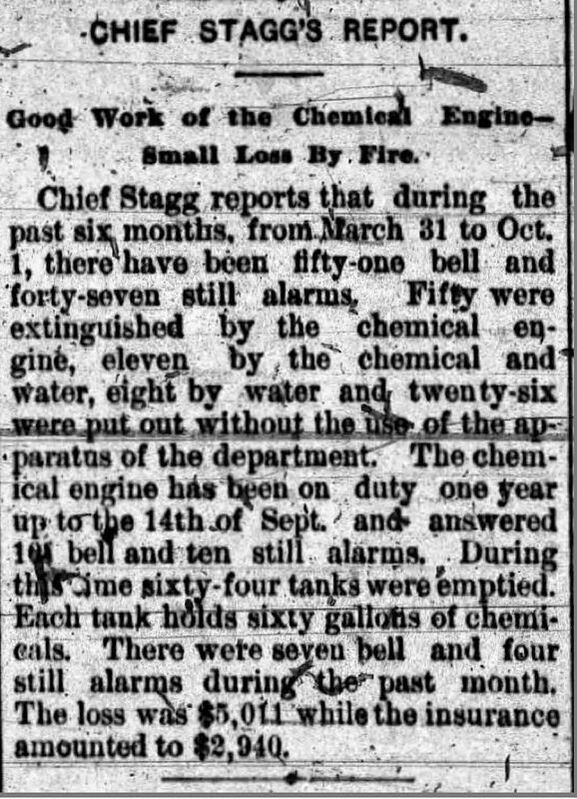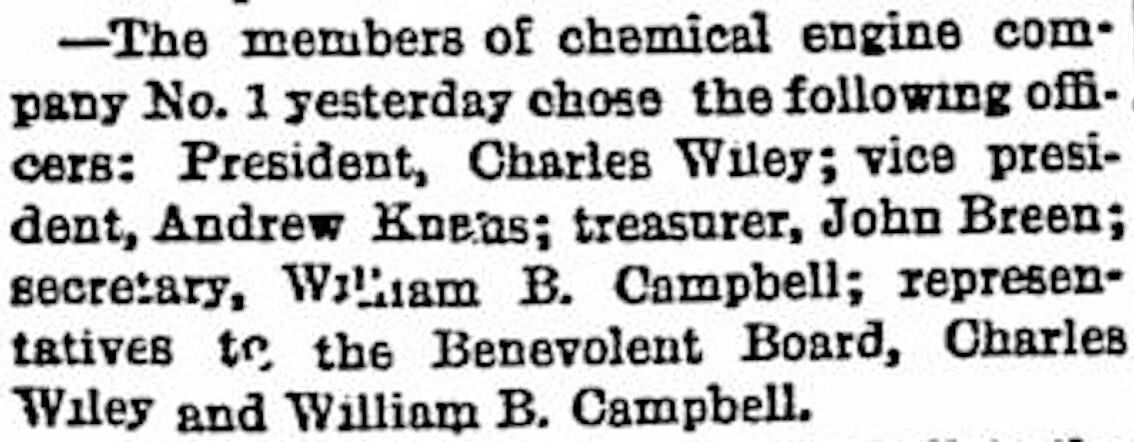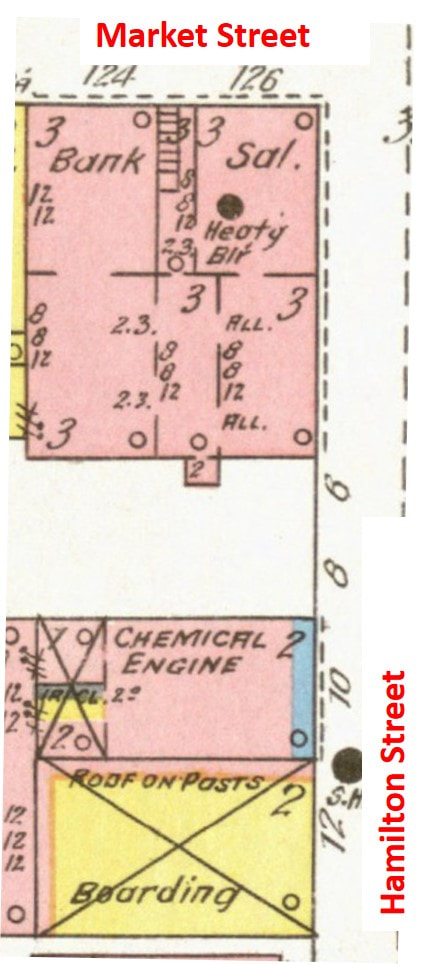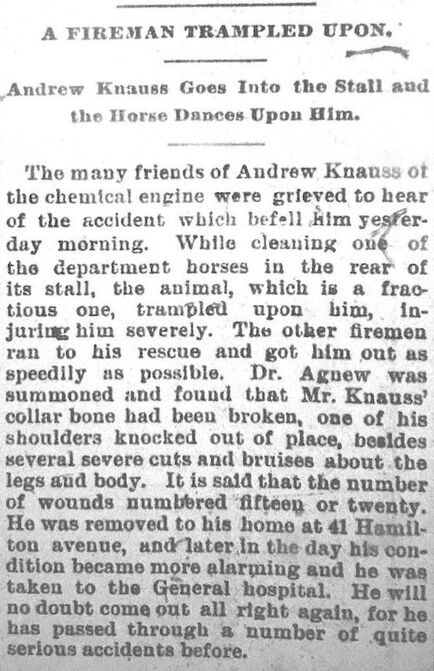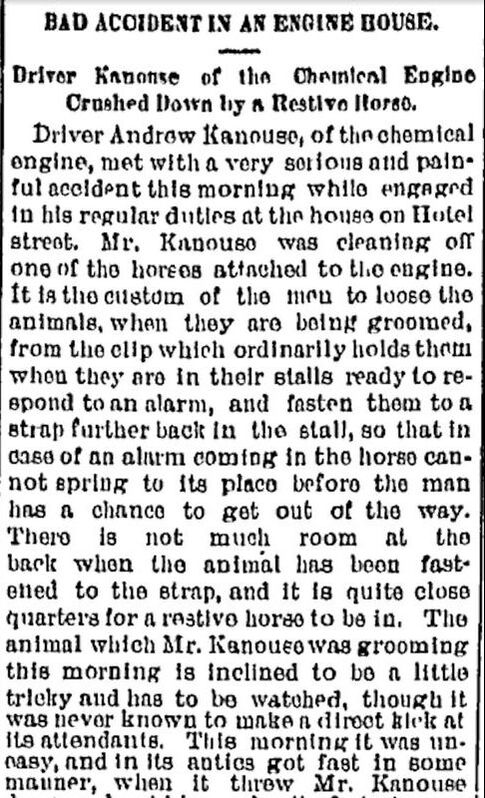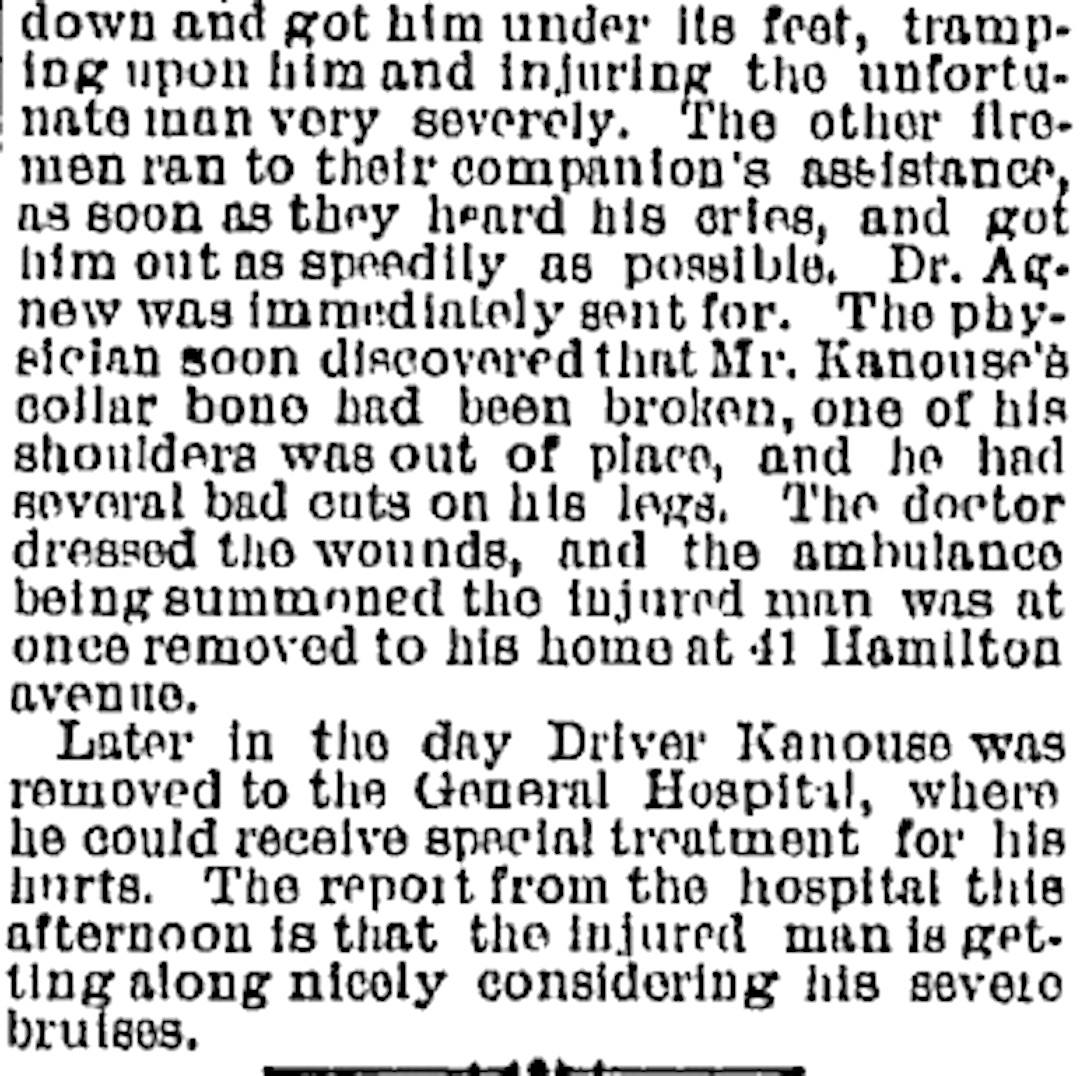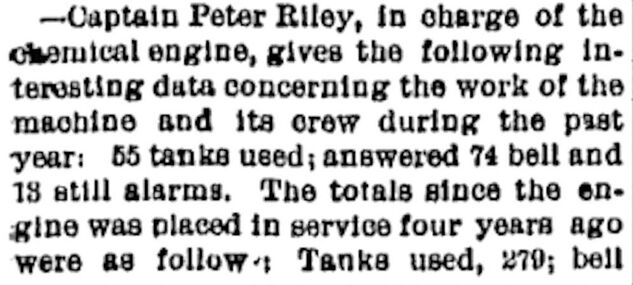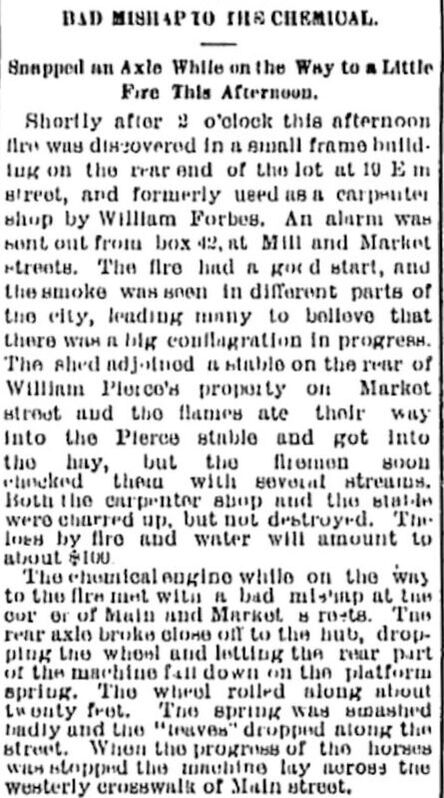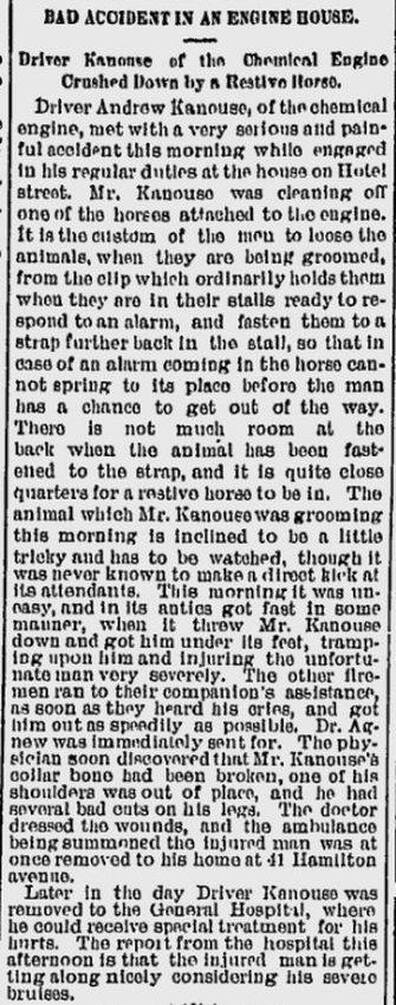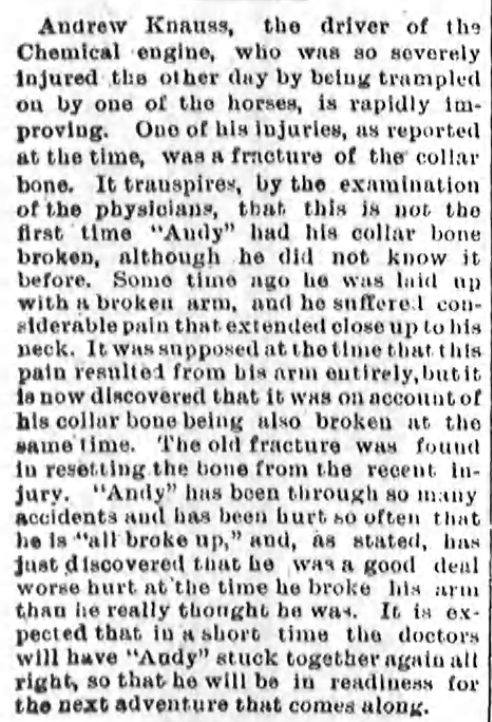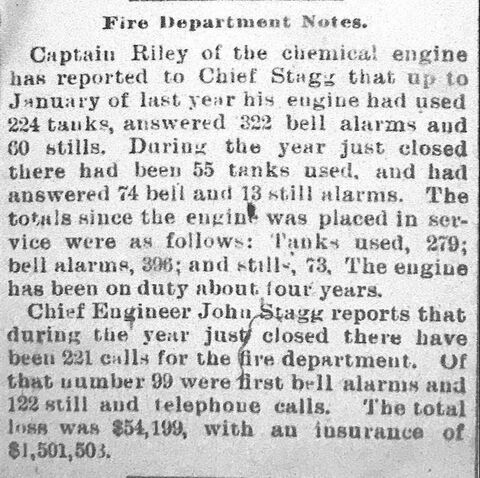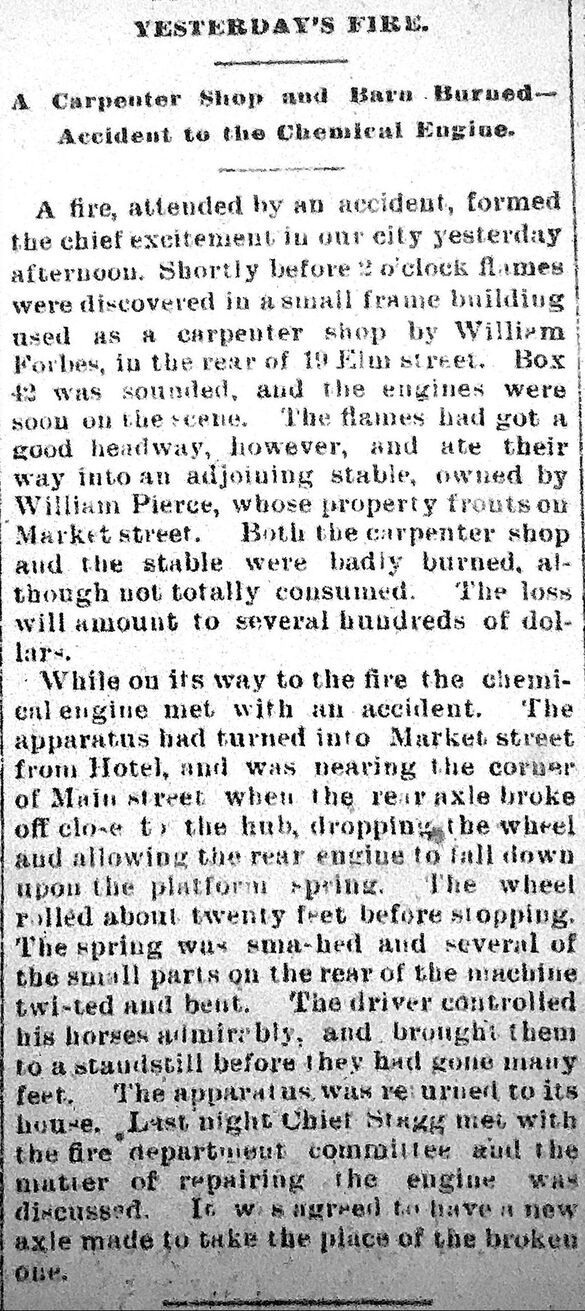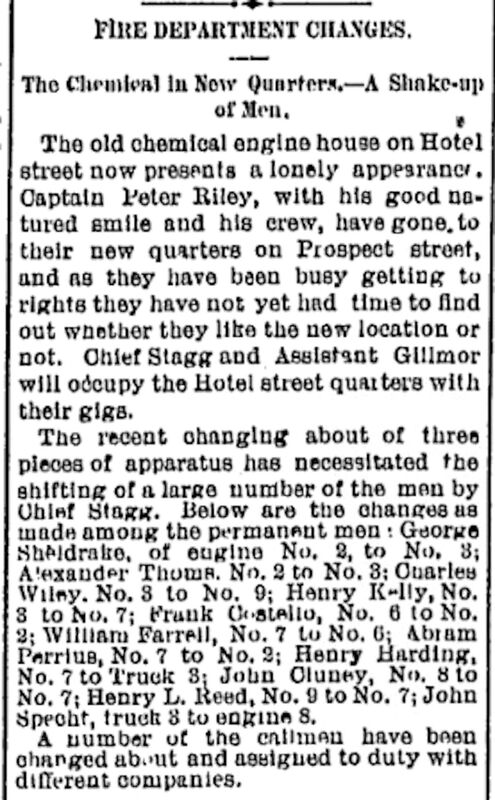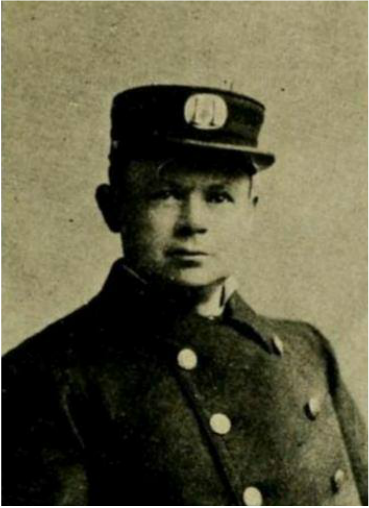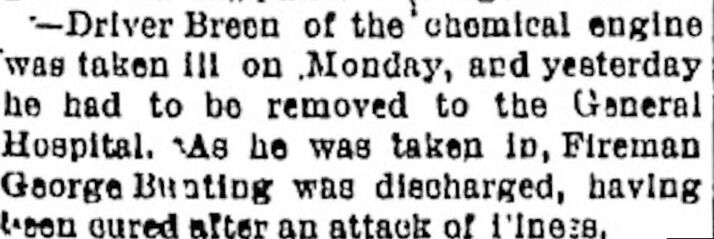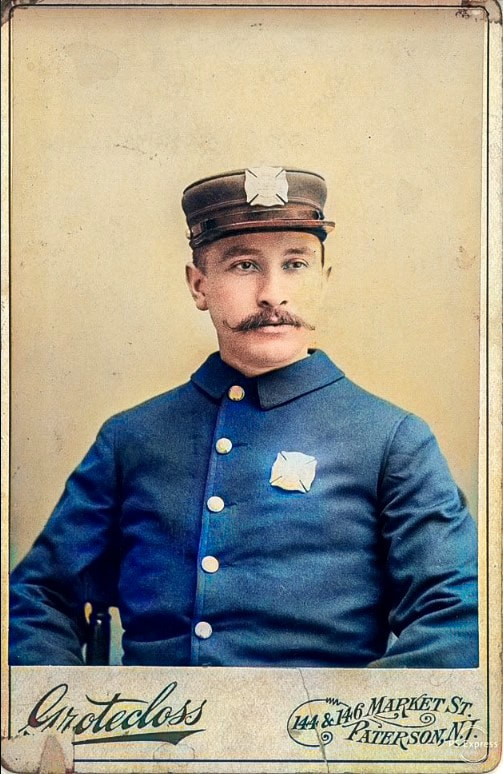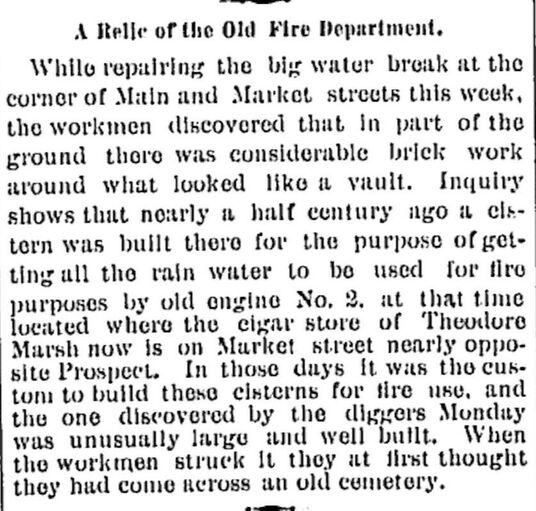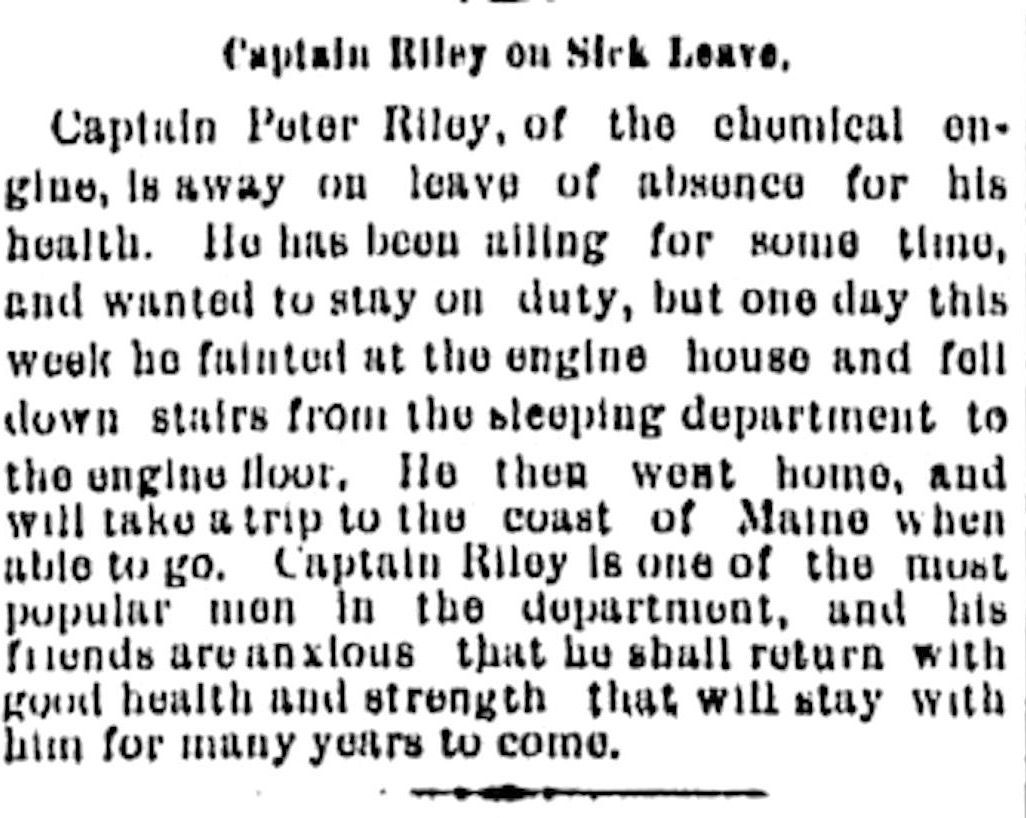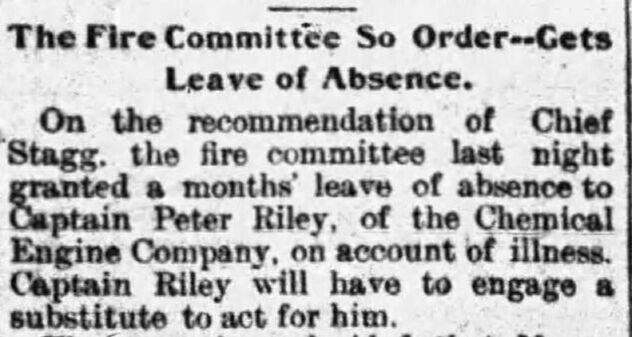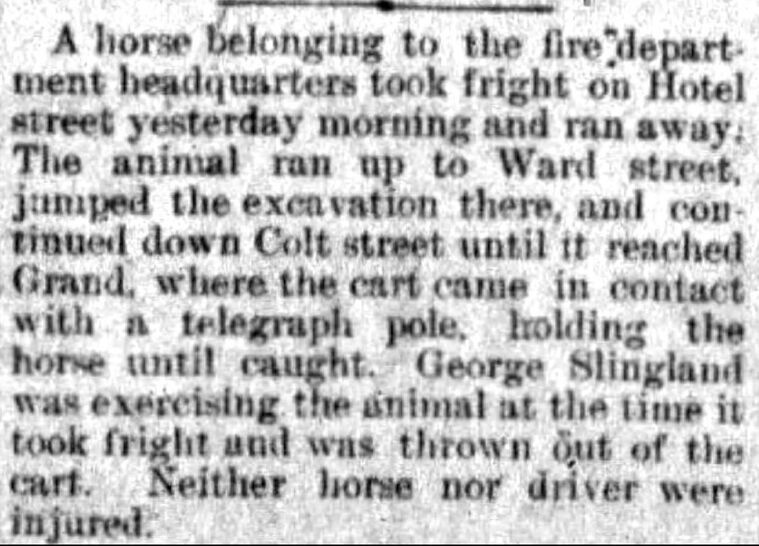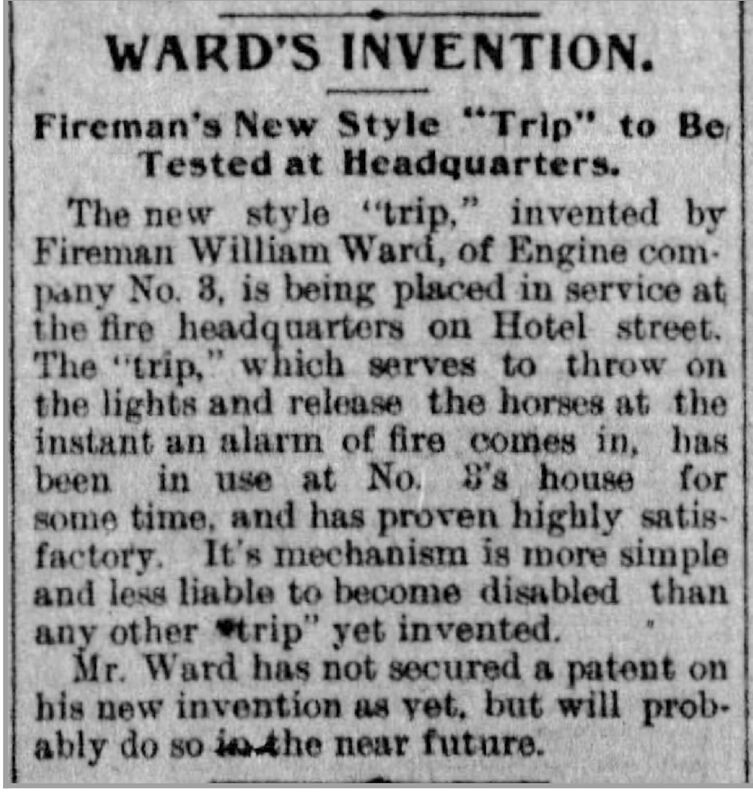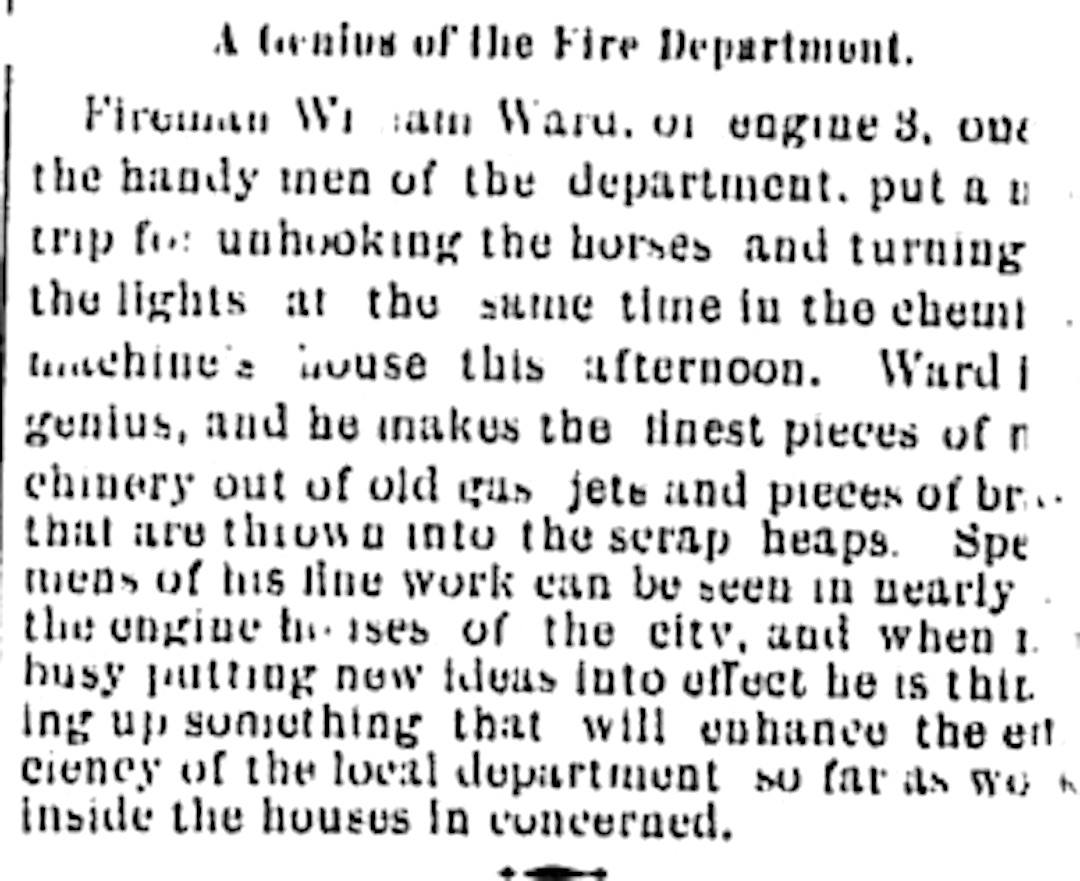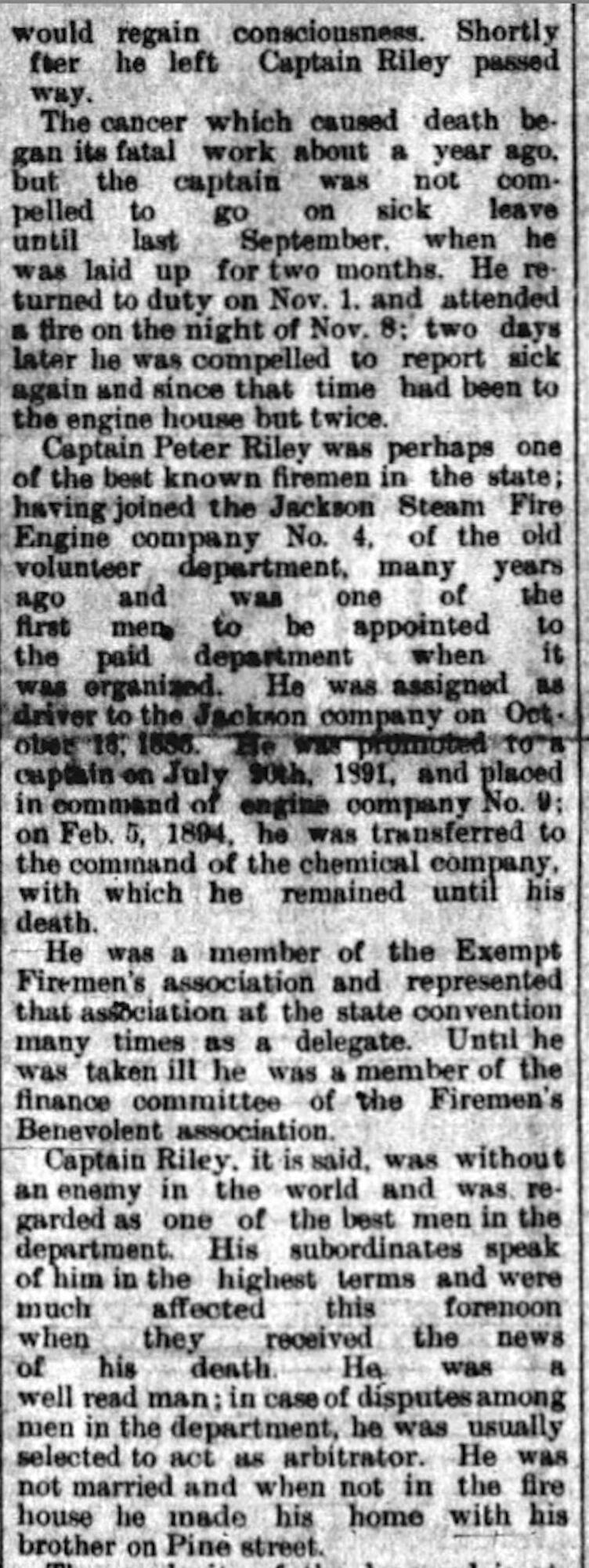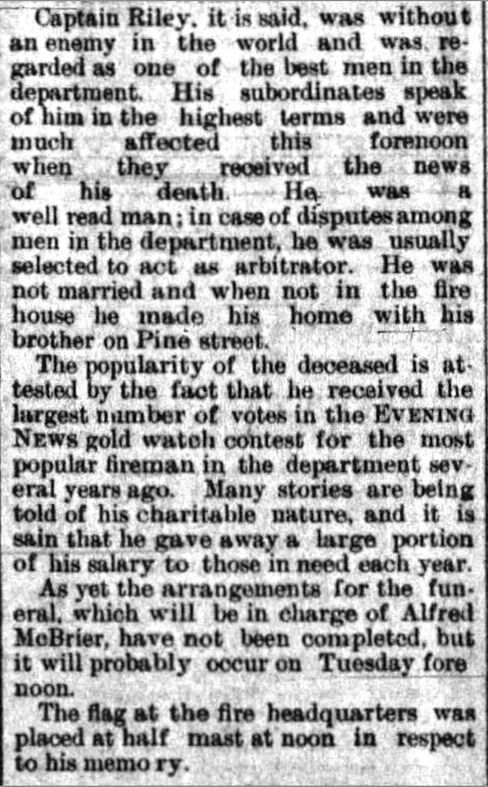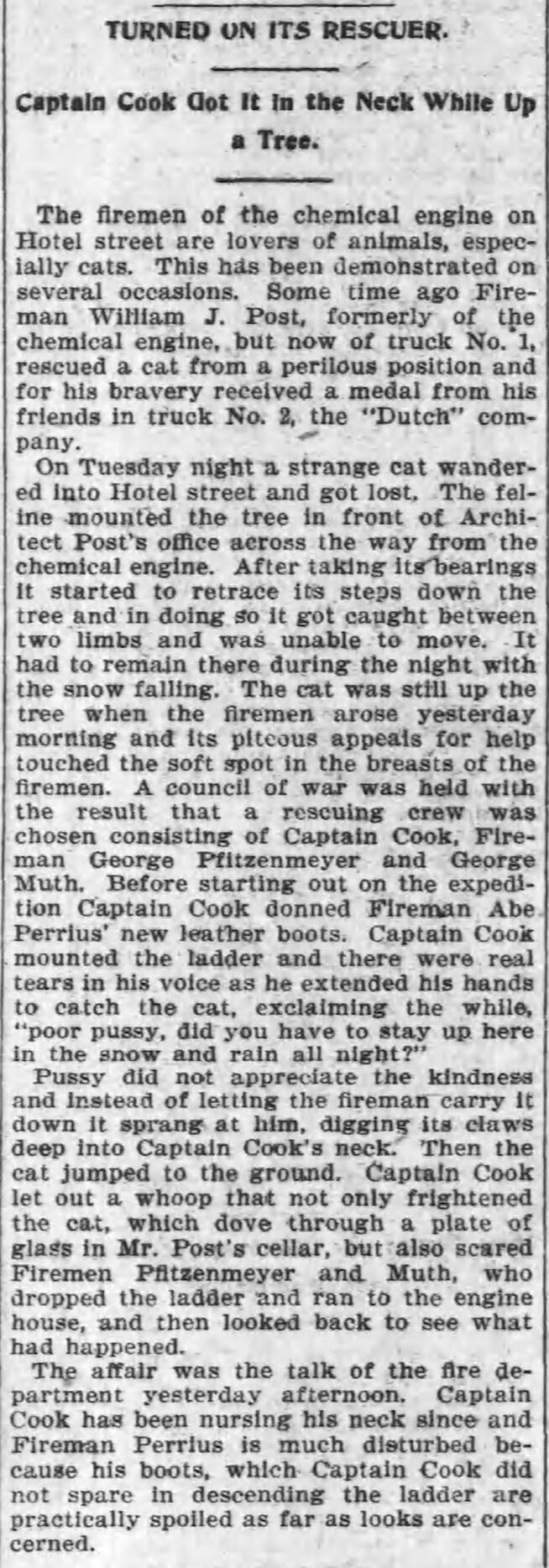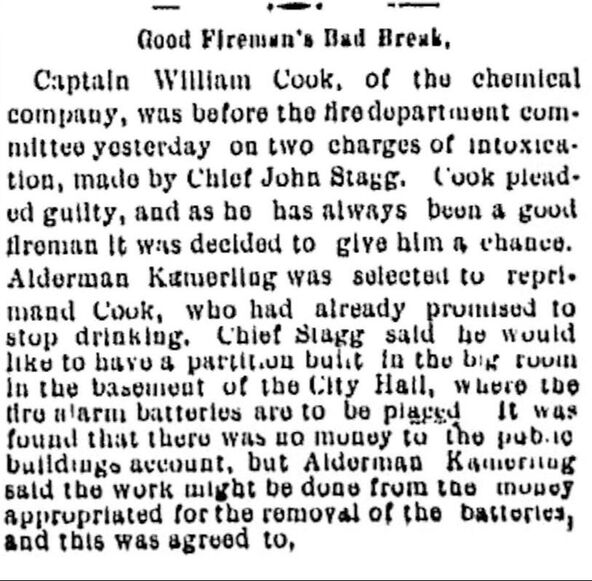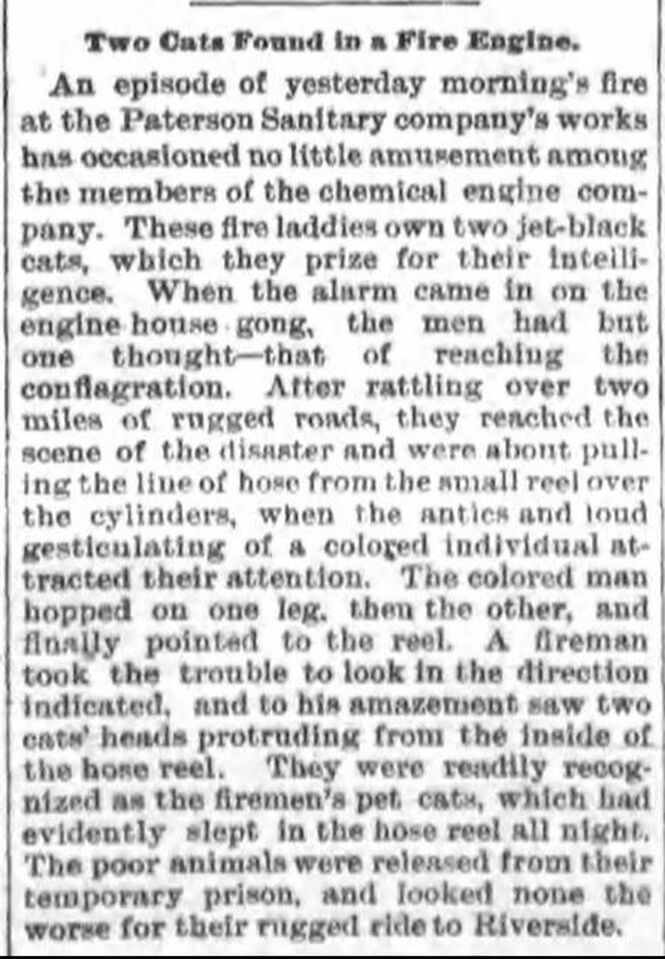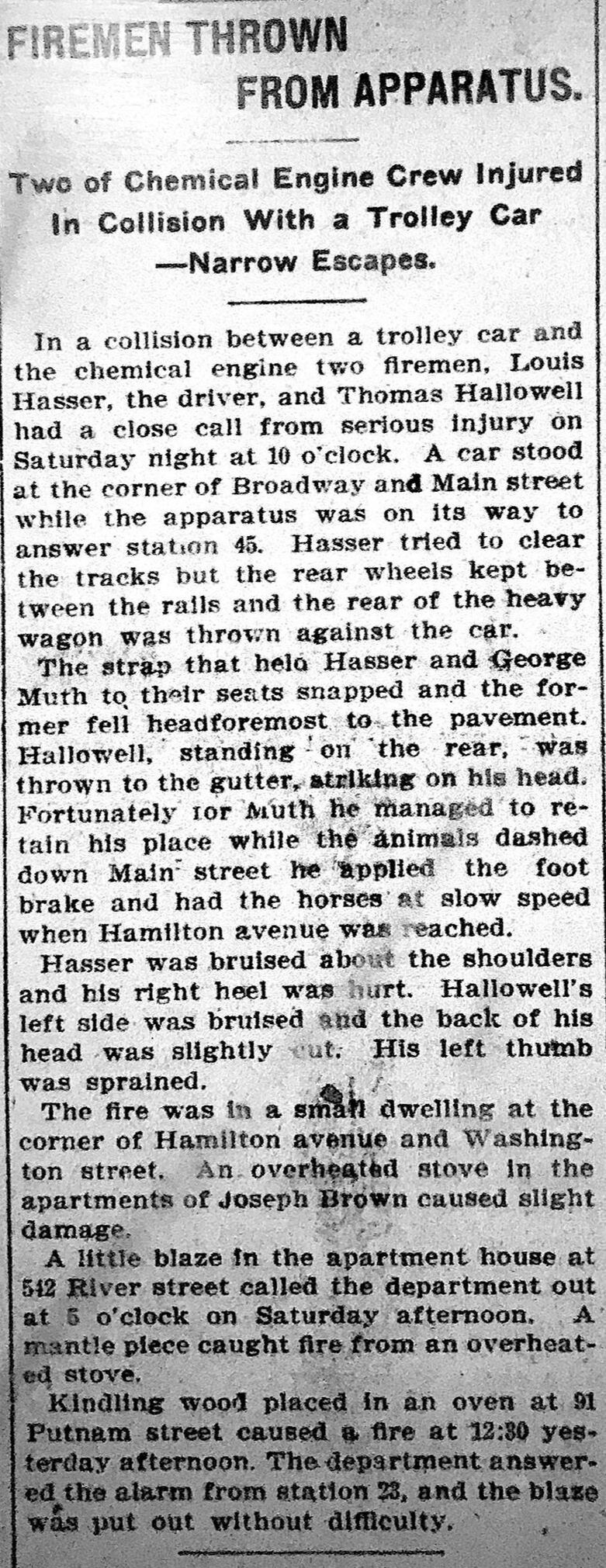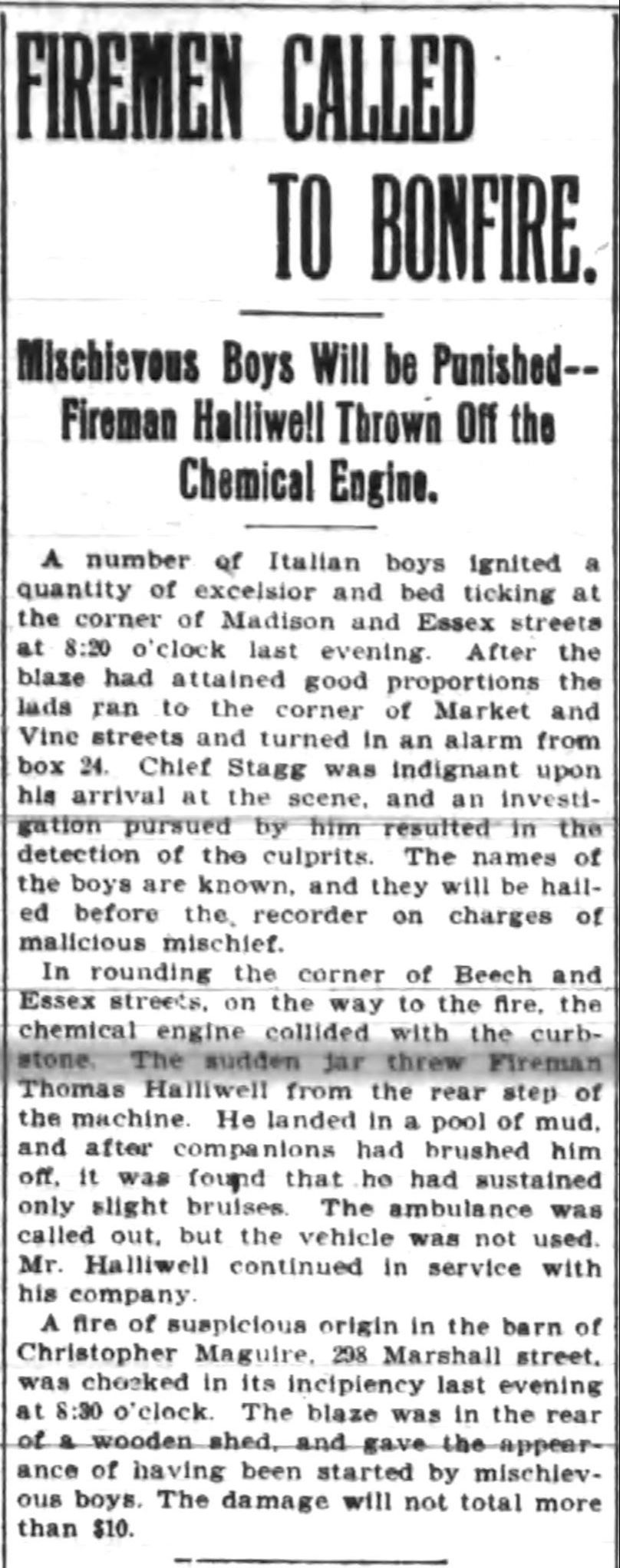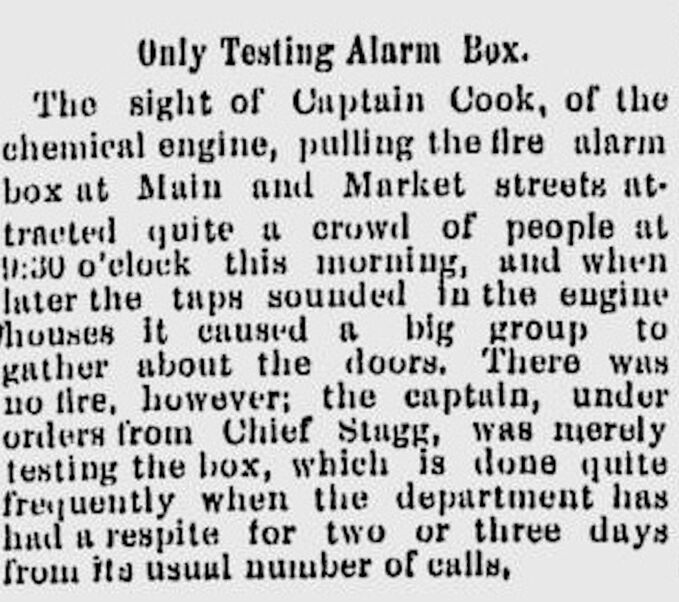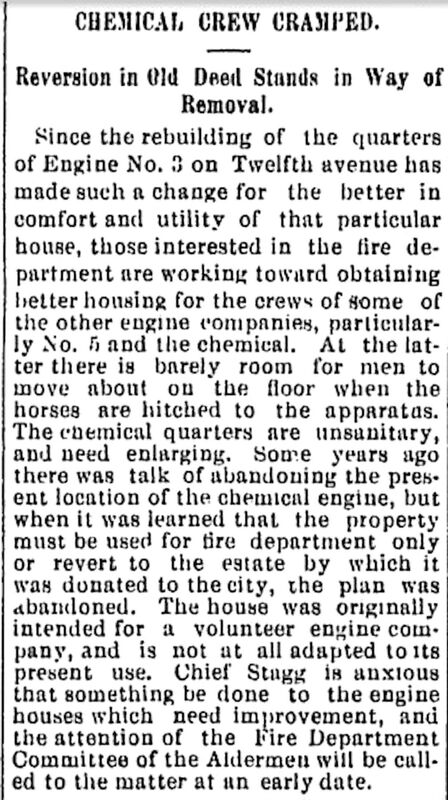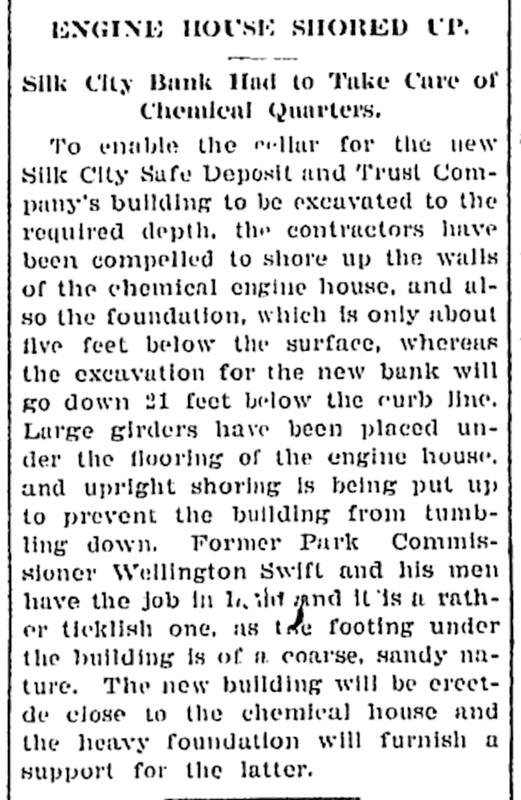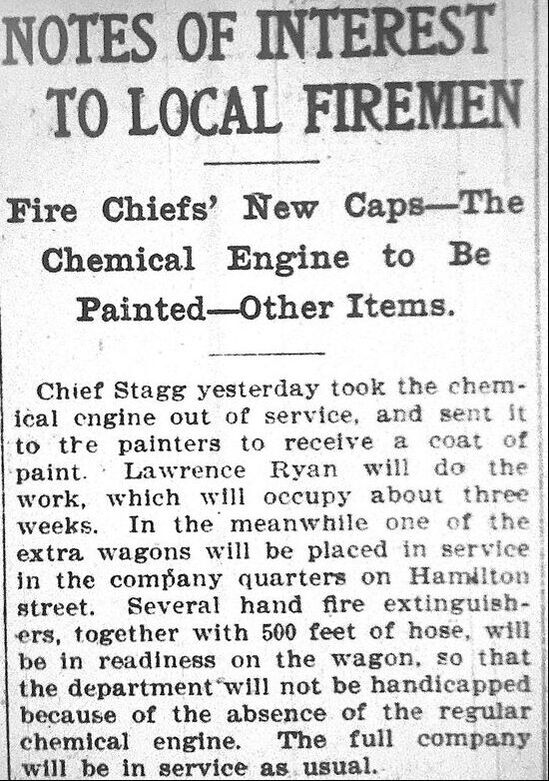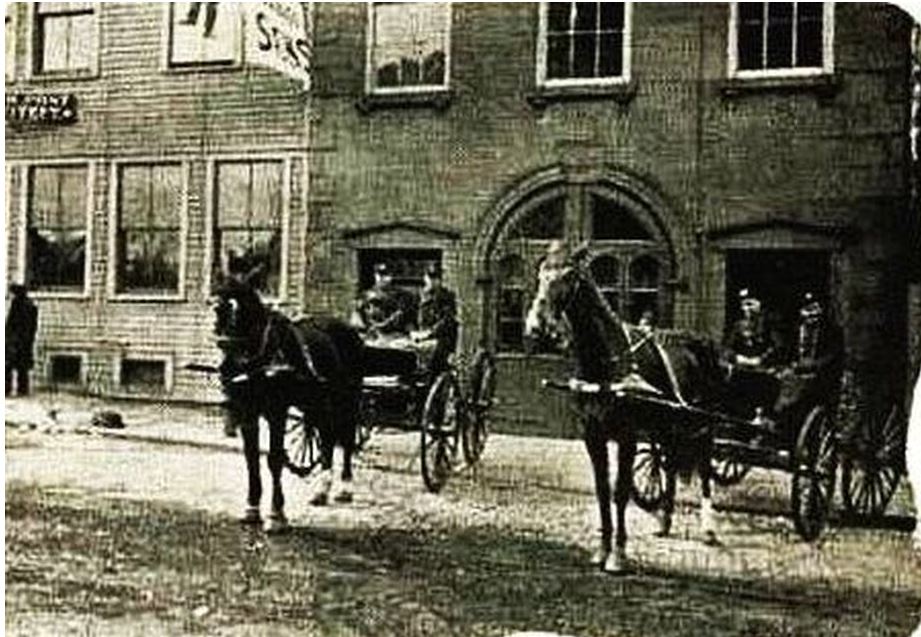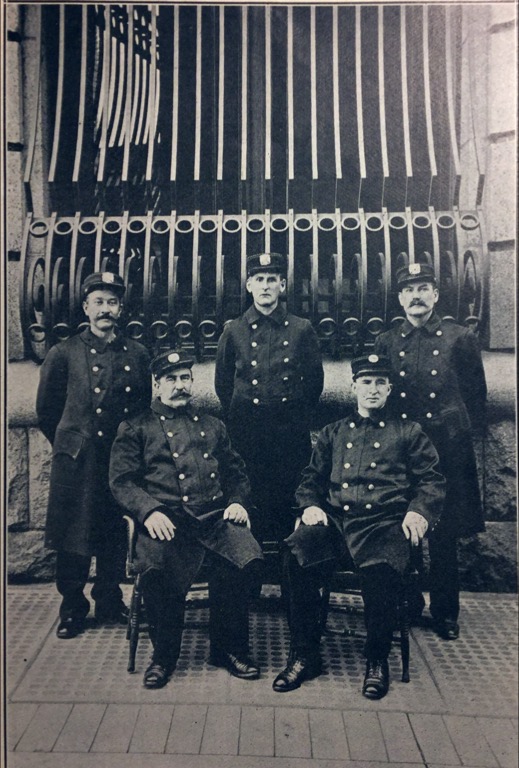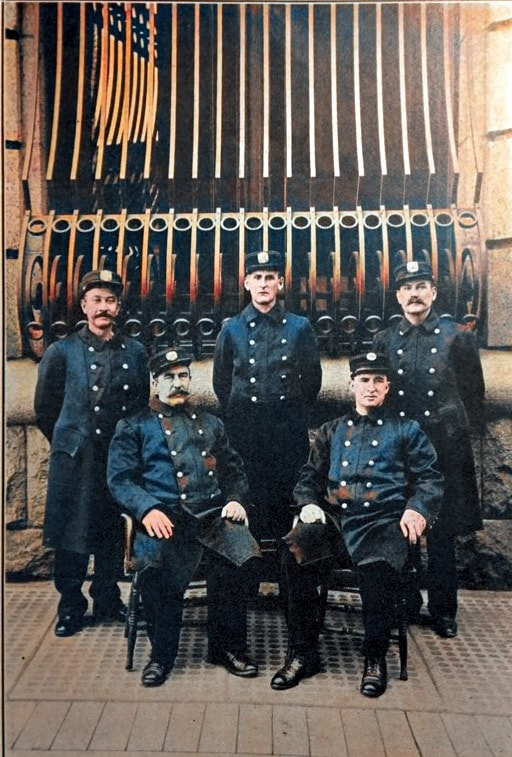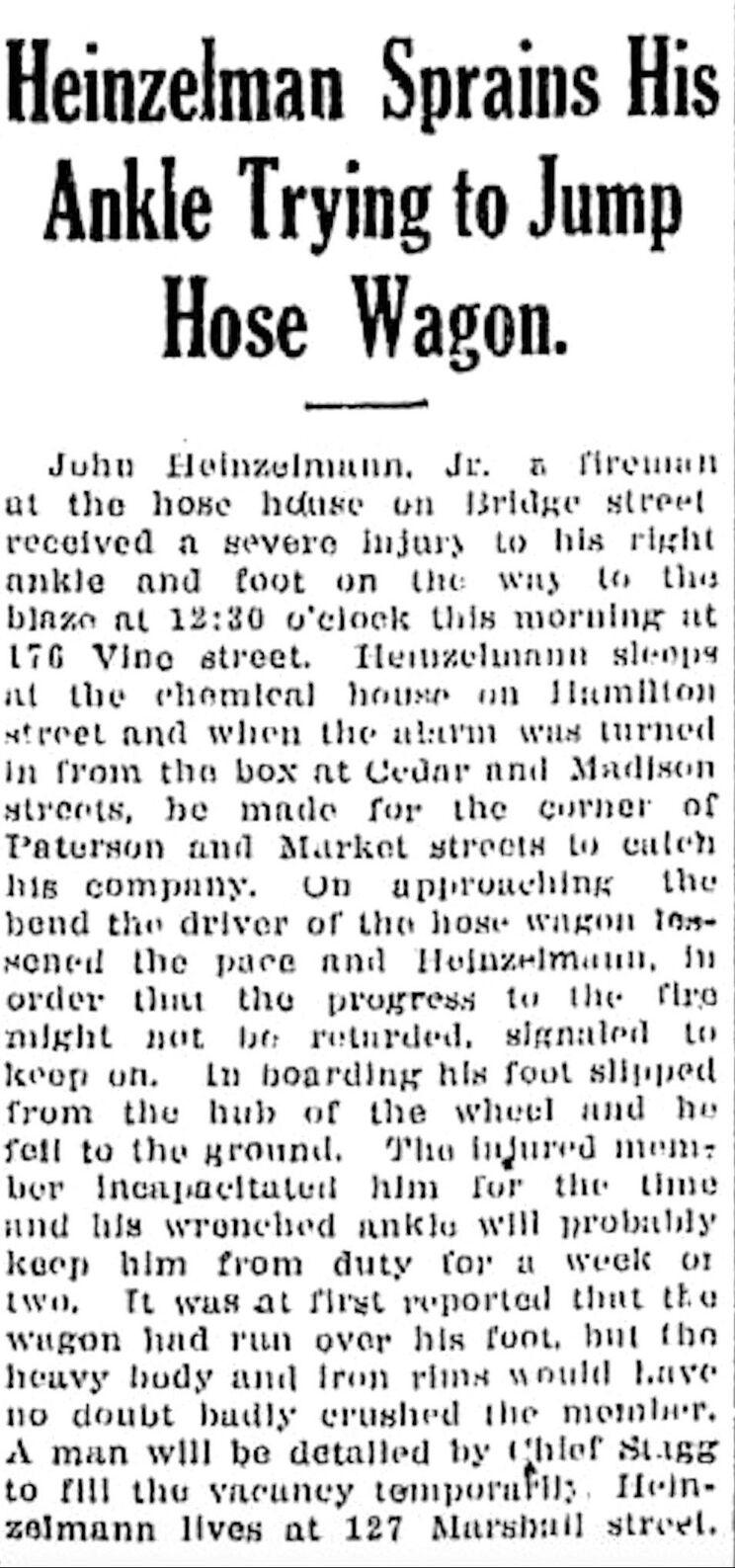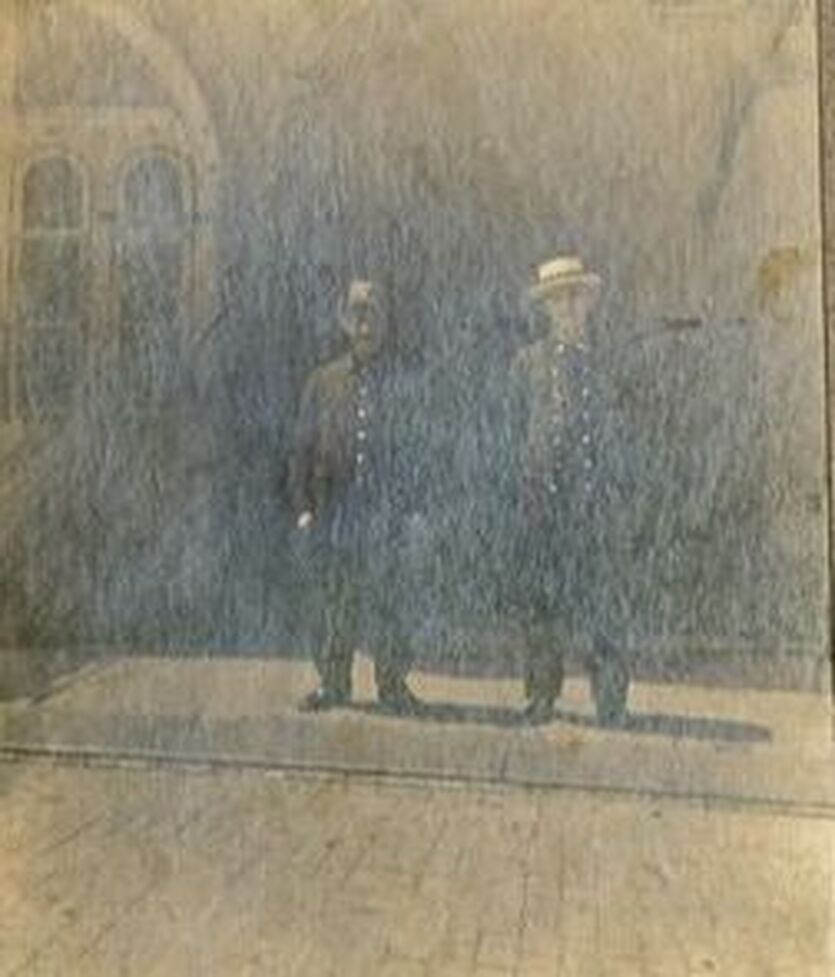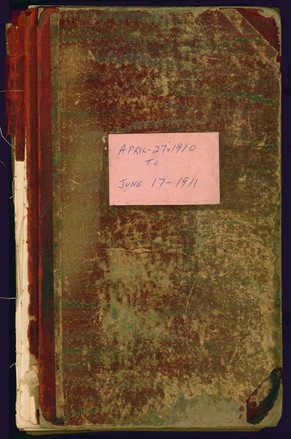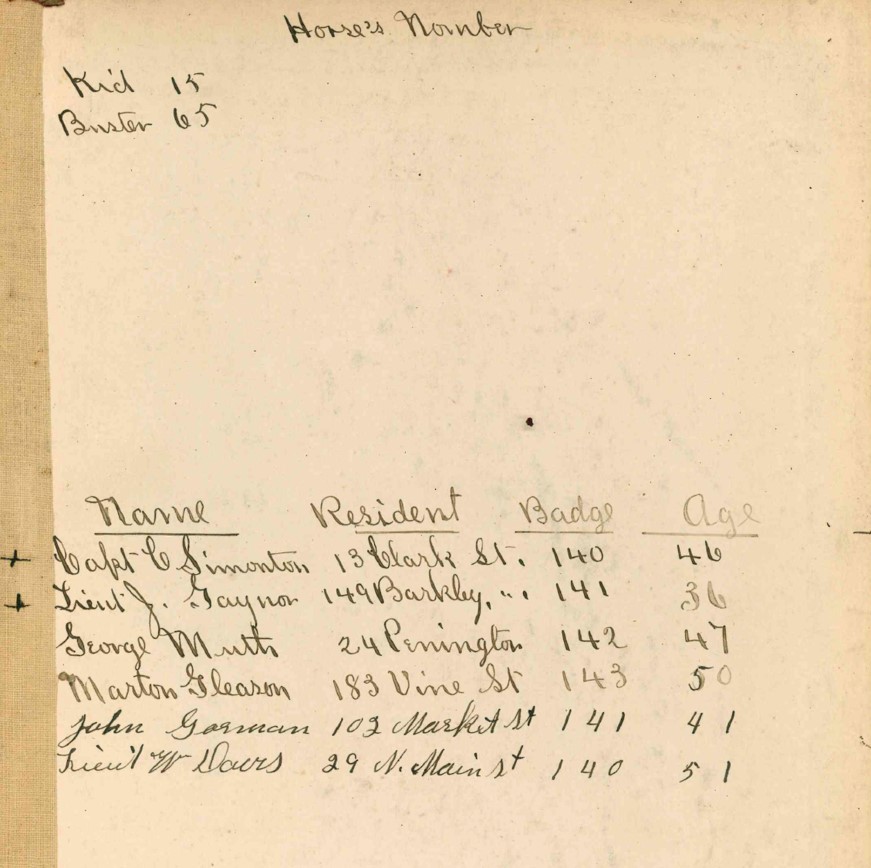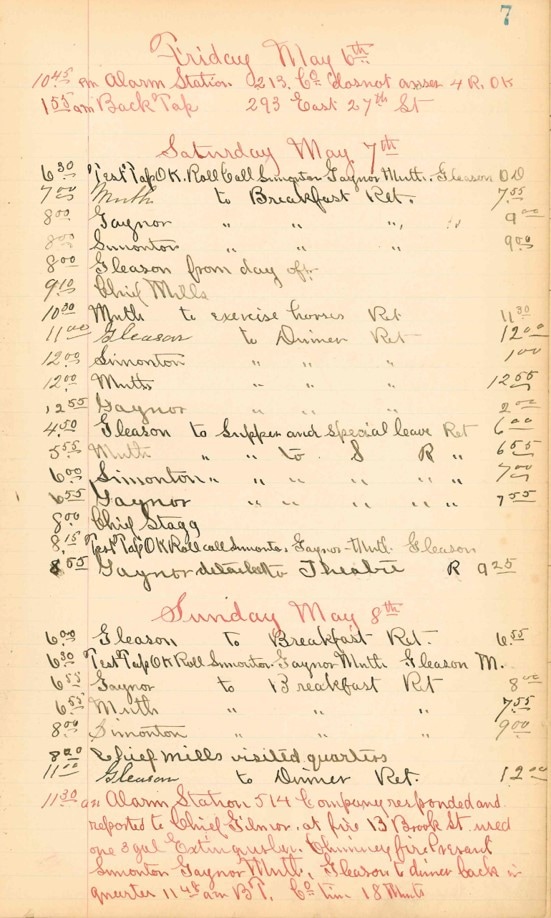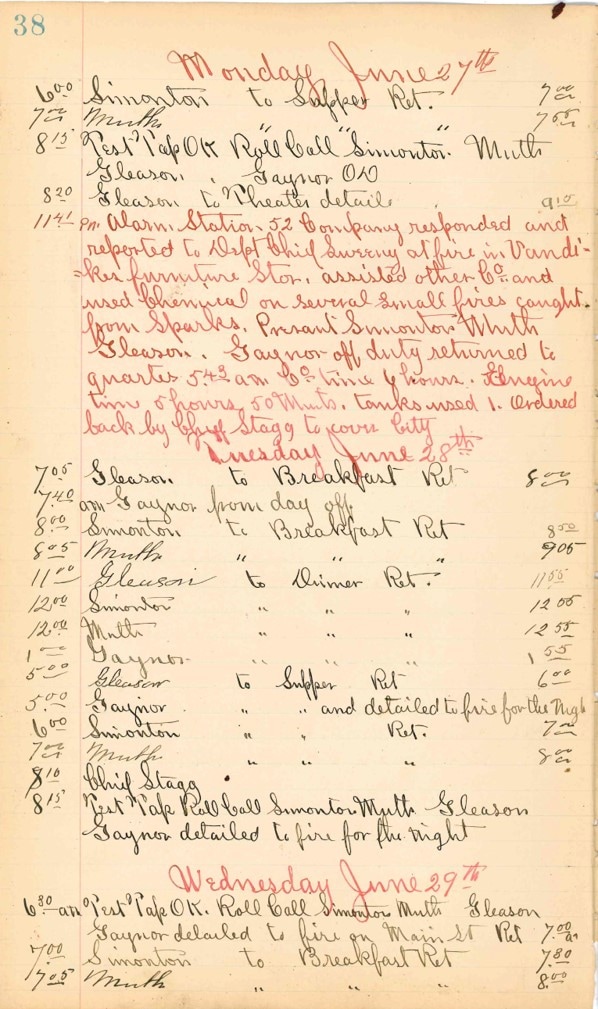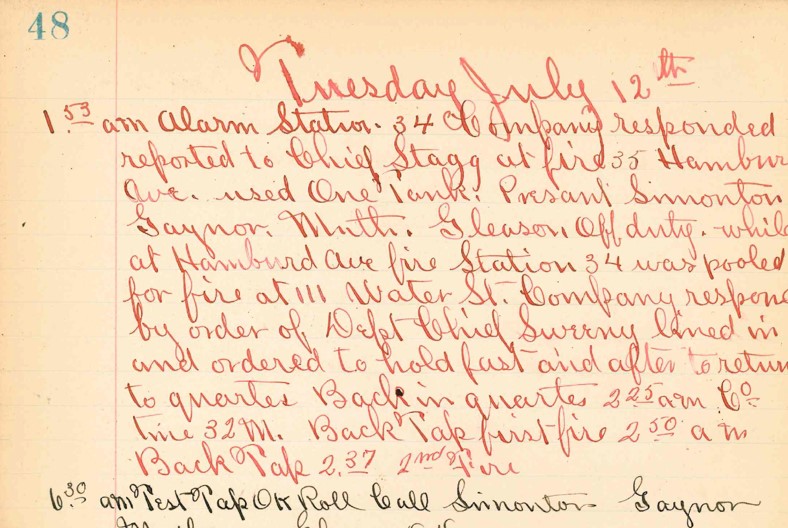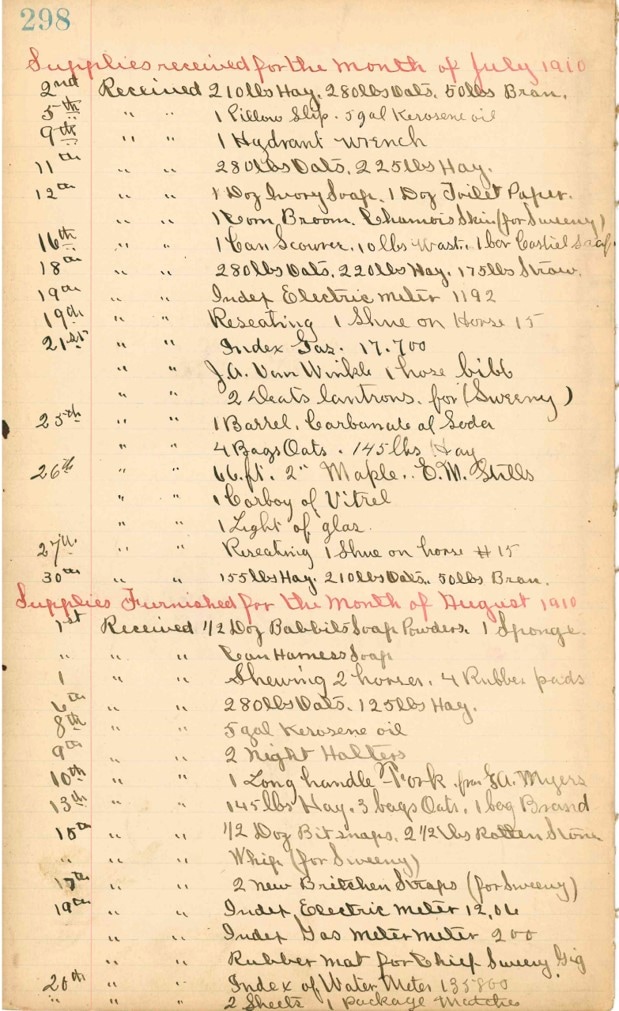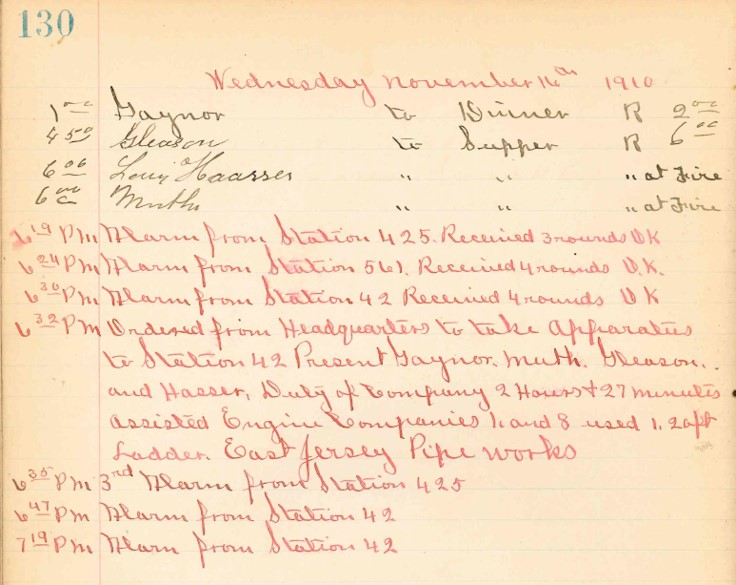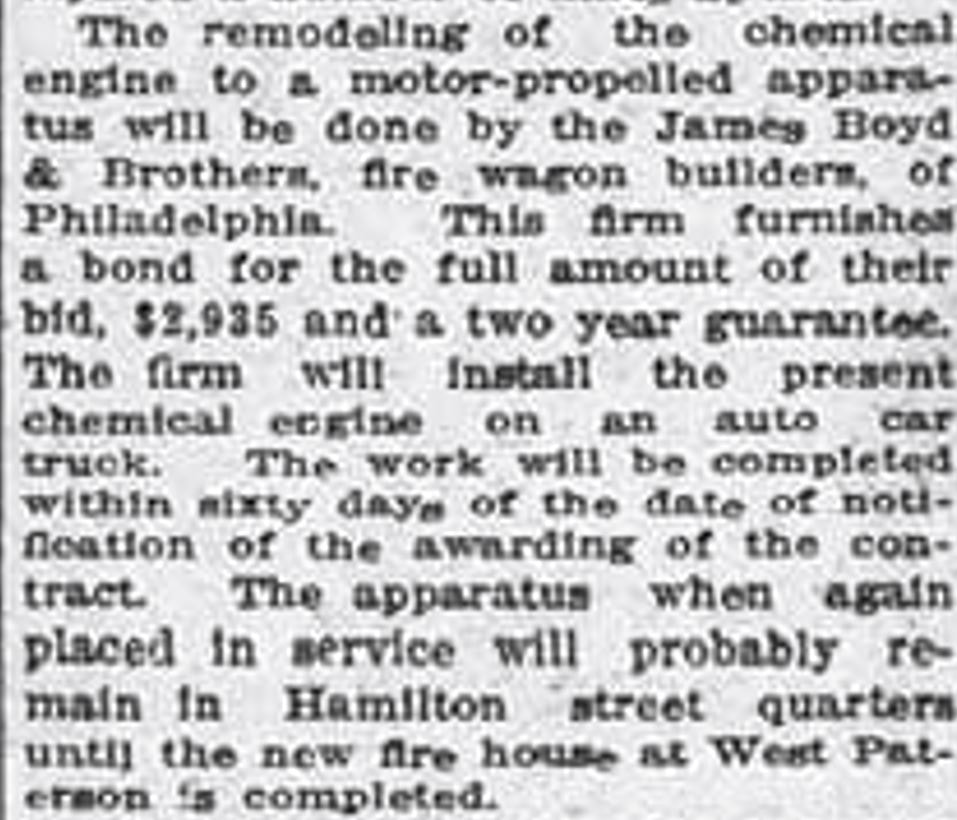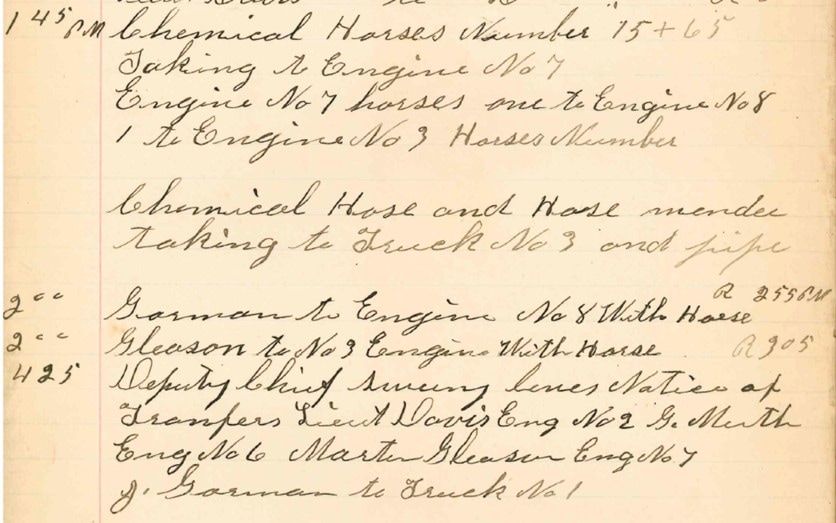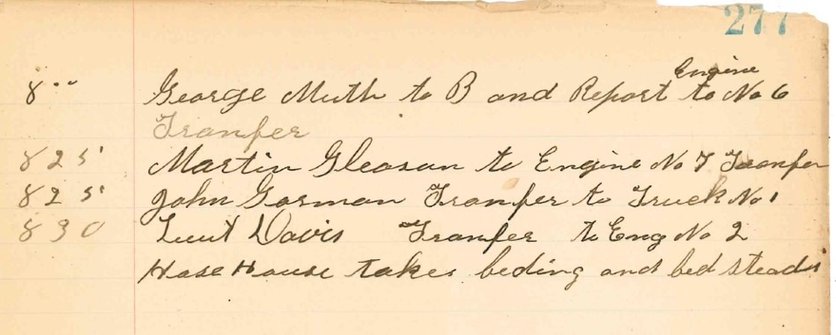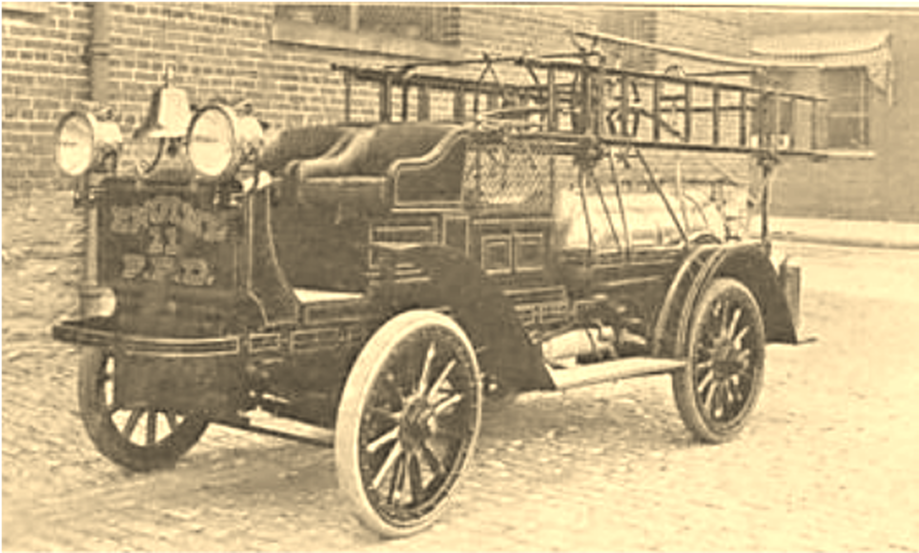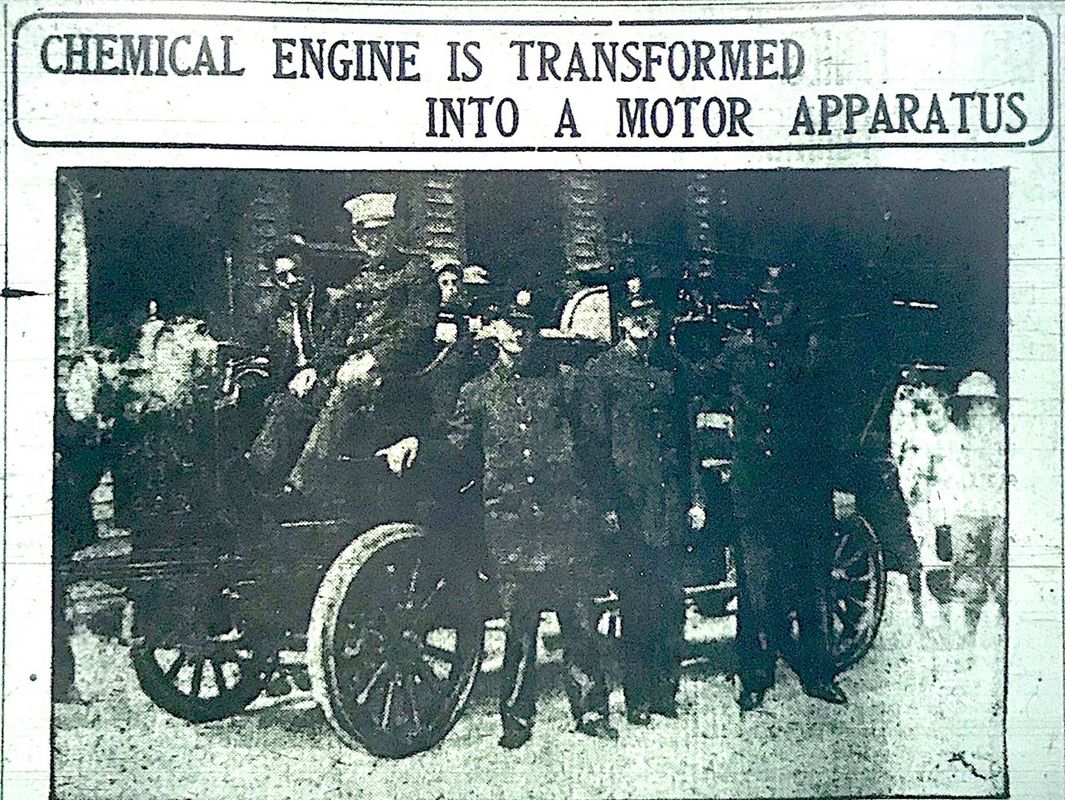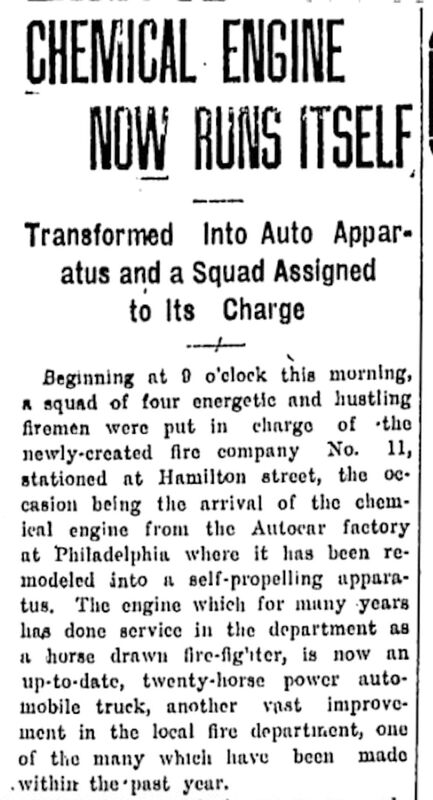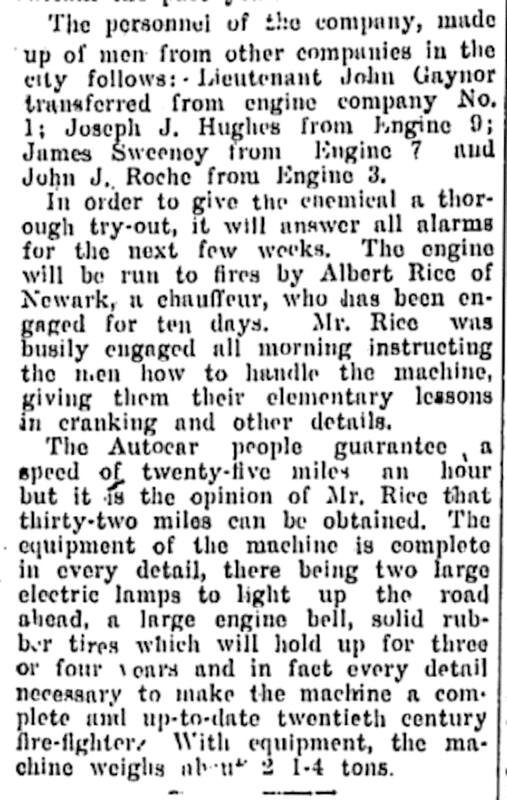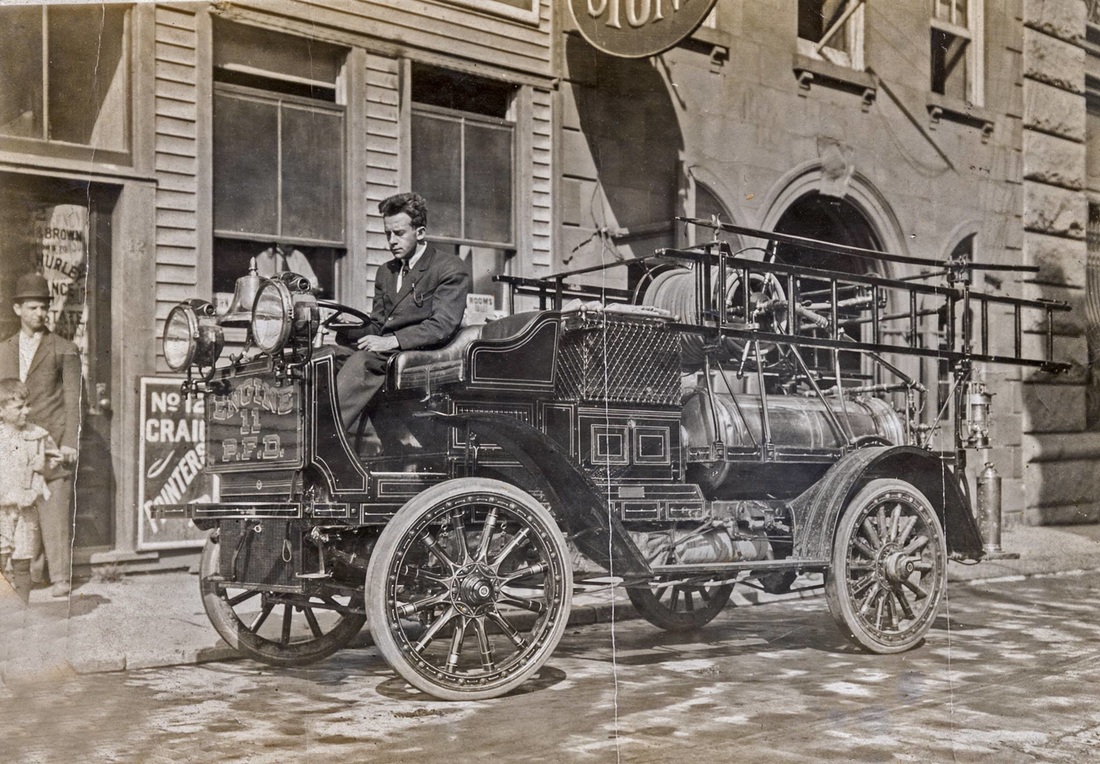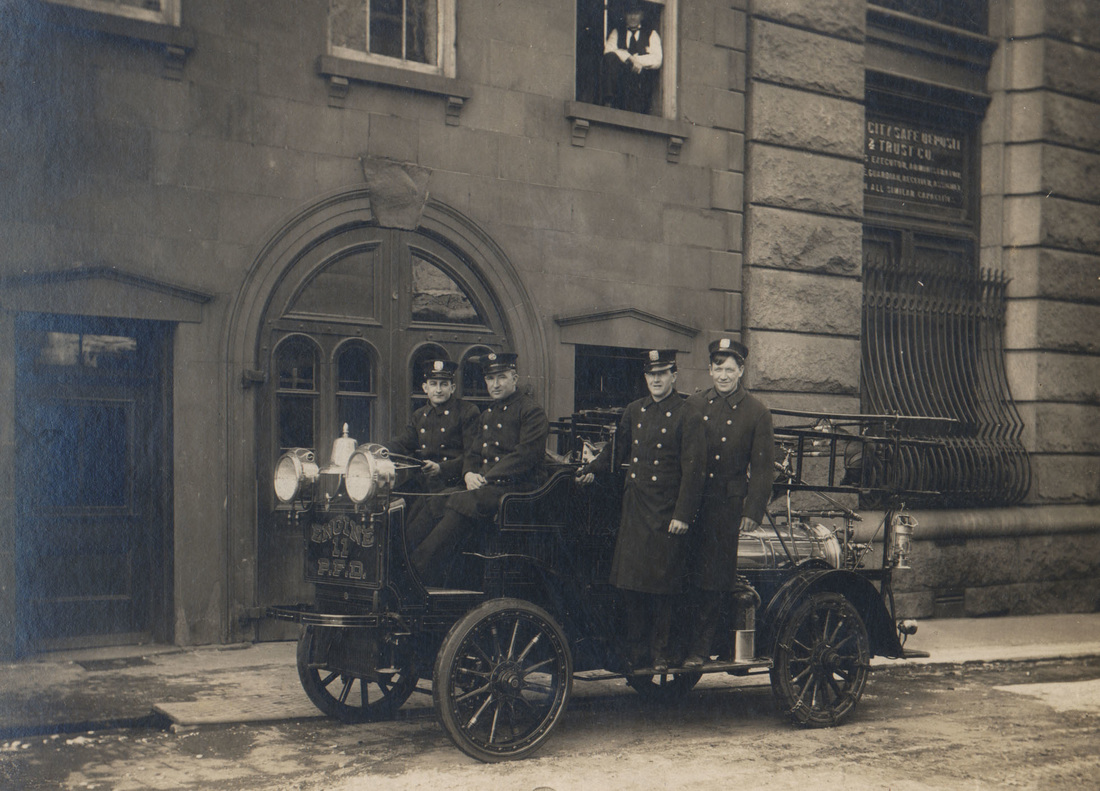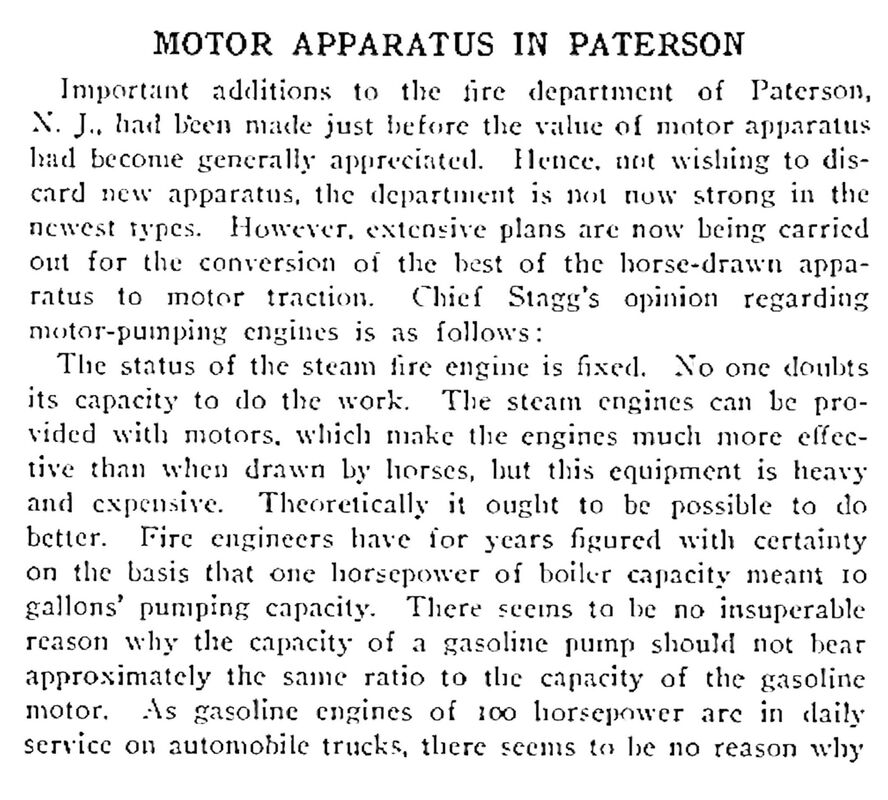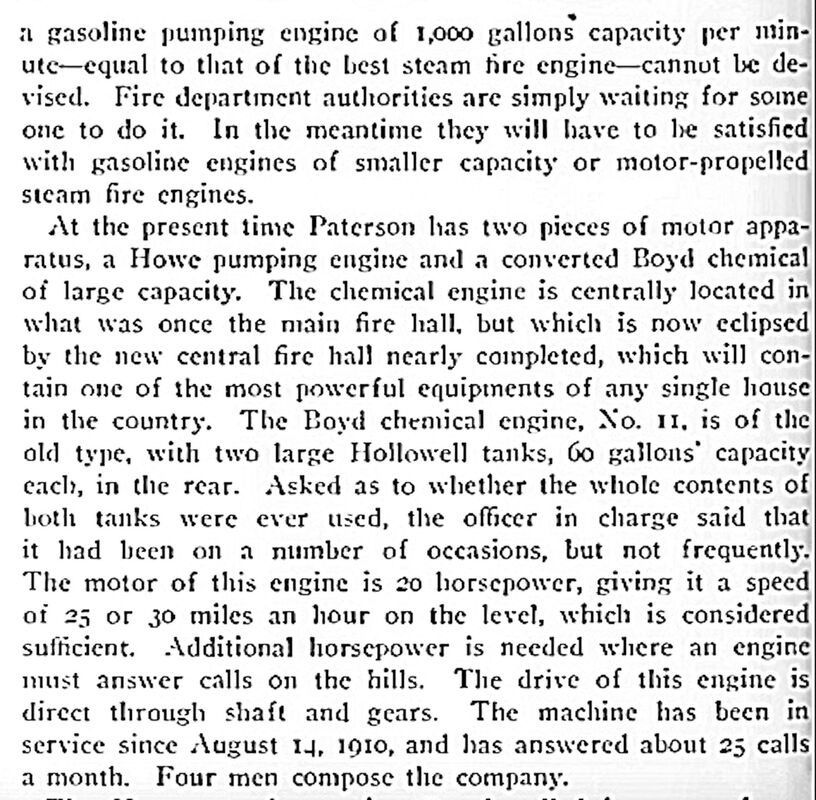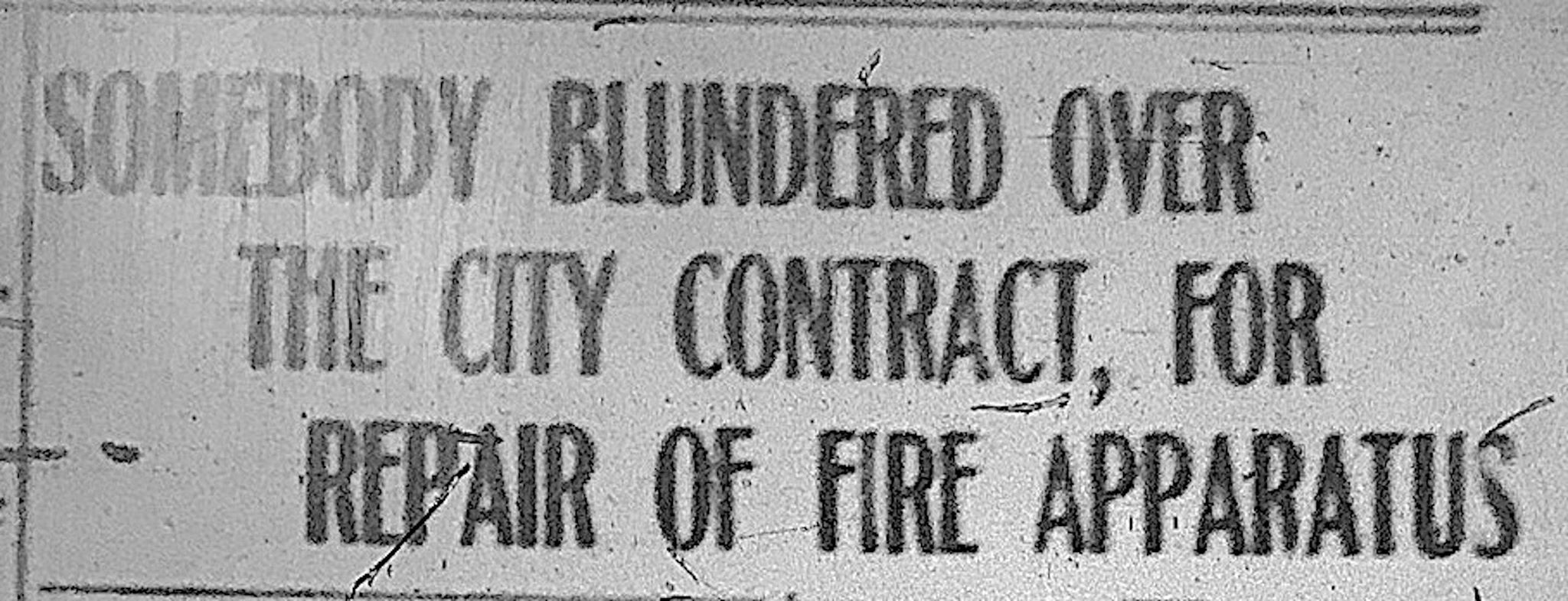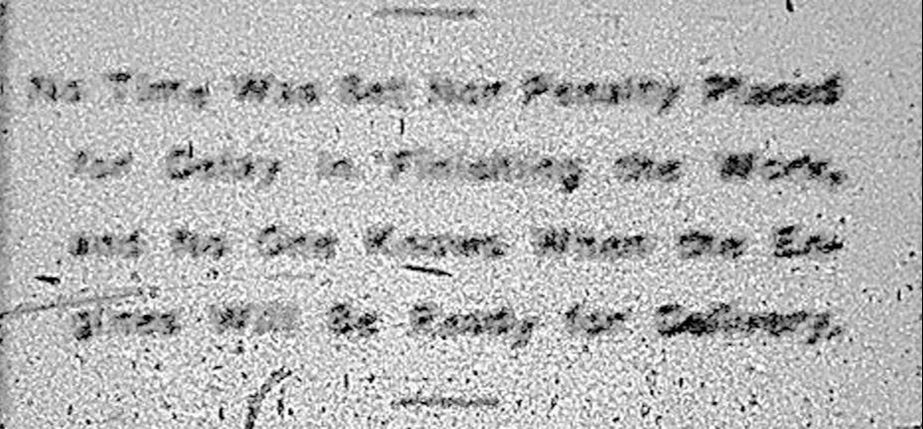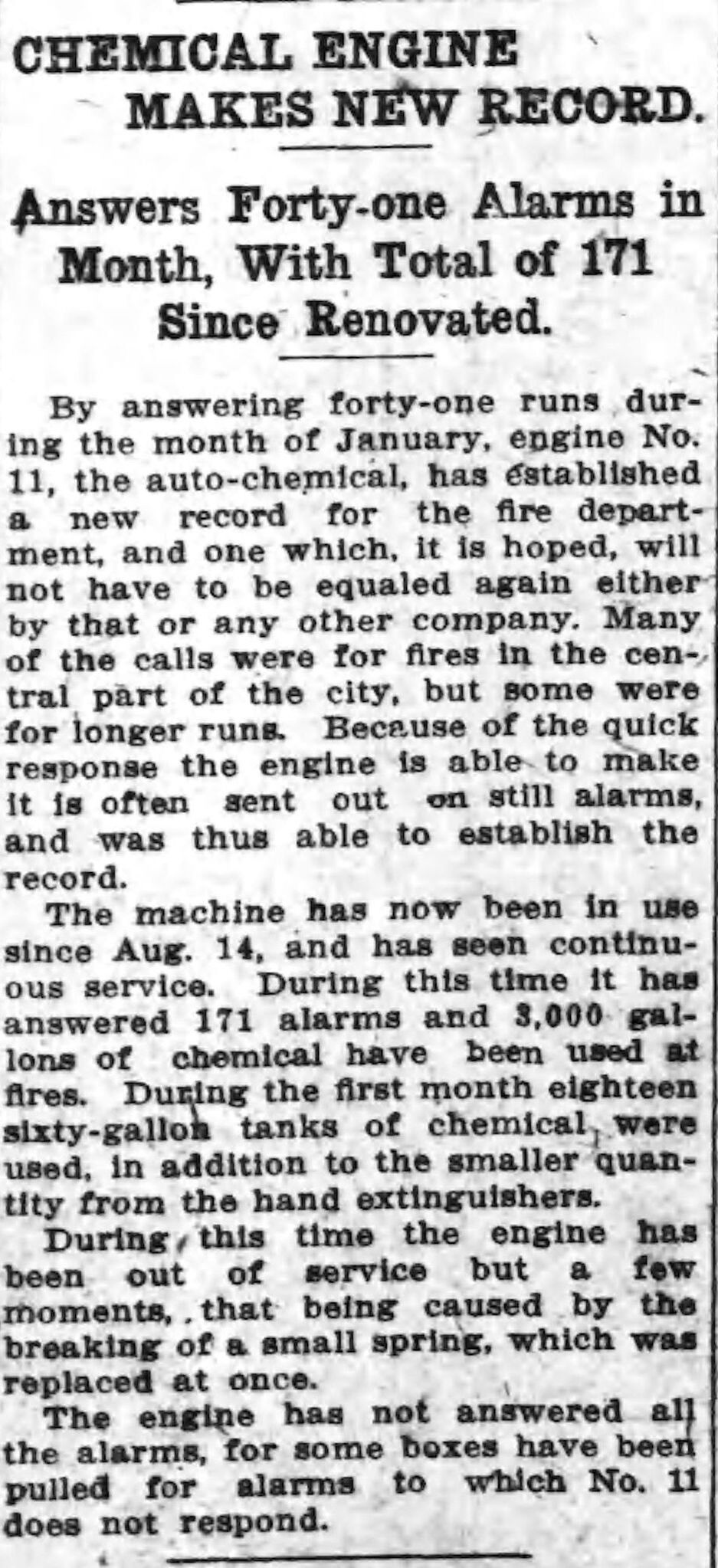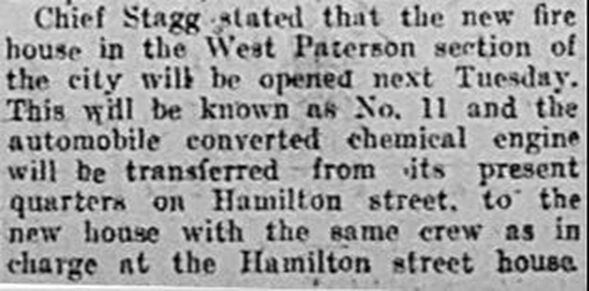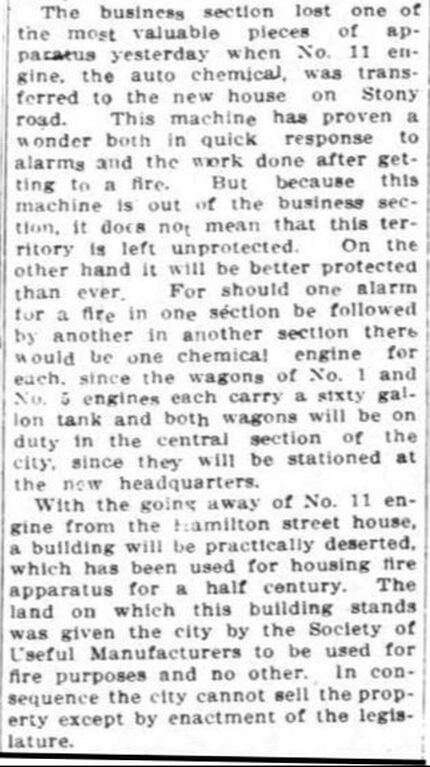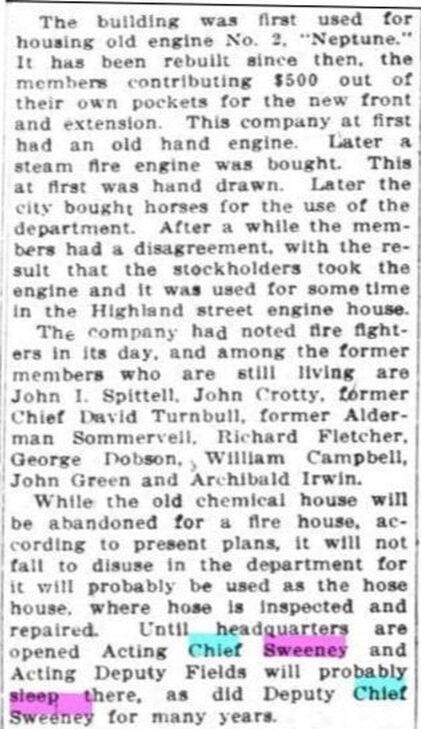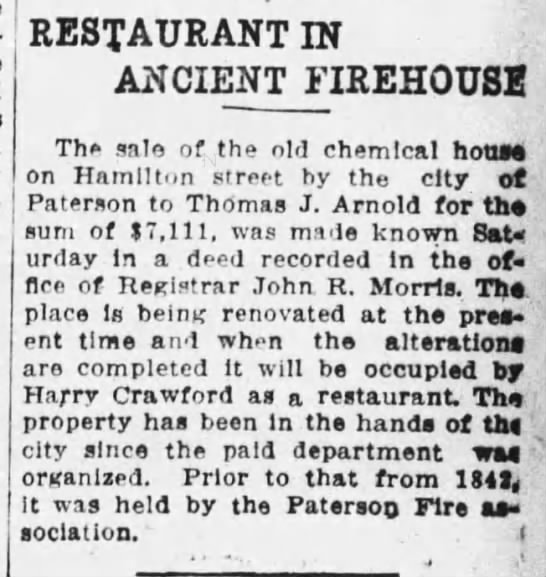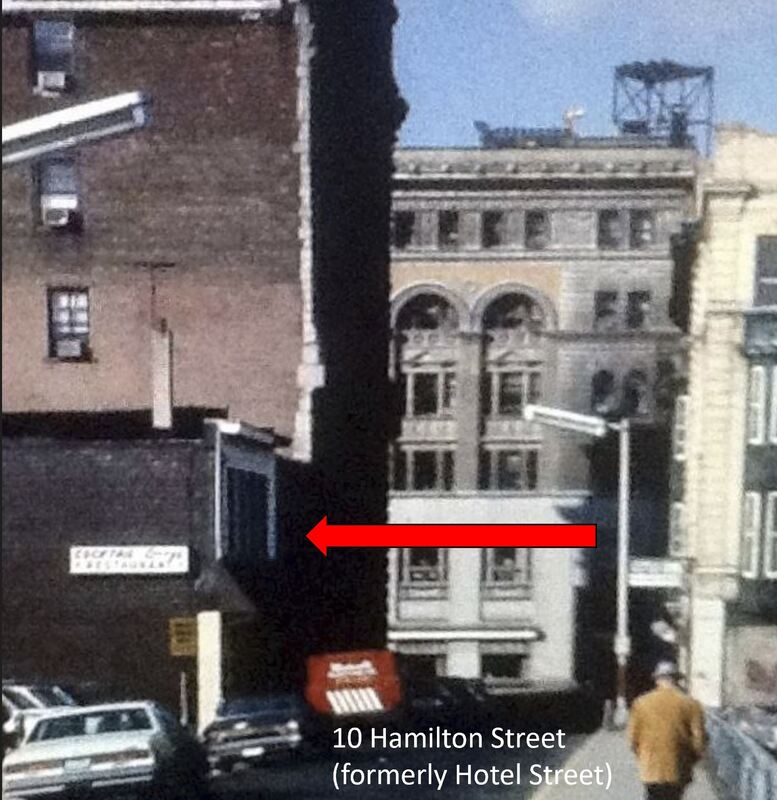10 Hotel / Hamilton Street
|
This firehouse at 10 Hotel Street (in 1894 renamed Hamilton Street in honor of the city's Centennial Celebration, was built in 1842 to house Neptune Engine Company 2 (originally organized in 1820) of the Volunteer Fire Department. The house was on the west side of Hotel Street very near Market Street.
In 1888 the Fire Department was reorganized by a special committee consisting of Aldermen Macdonald, Miller and Kearney, and a partially paid department or "Call System" succeeded the volunteer system on March 20th, 1890, with four permanent men in nine engine and three hook and ladder companies, and eight call men to each. The fulltime men consisted of Captains, Engineers, Drivers and Tillermen as well as the chief, and two assistants. |
Chronological Listing of Events at Hotel / Hamilton Street Firehouse
March 20, 1890: The transition from a totally volunteer department to partially paid "Call System" occurred and Neptune Engine Company Two became Engine Company 2.
10 Hotel Street house was also the first fire headquarters used by the paid department and Chief Stagg operated out of this house. He is seen below in his gig stationed outside of the firehouse with his driver George Pfitzenmeier.
March 20, 1890: 1883 Second Size Jeffers Steam Fire Engine and a John Post Hose Wagon
Initial Roster: Engine Company 2
Captain Floyd King
Engineer George Dobson, Drivers Henry Nagle and George Sheldrake
Callmen: Samuel Simonton, William Butterworth, William Davis, JohnMcGill, John Shaw, George V. Brower, Peter Dahlinger, William H. Ward
June 21, 1890: New Chemical Engine ordered
June 13, 1890: FD Committee travels to Boston to inspect Babcock Chemical engine
September 9, 1890: New Chemical apparatus in transit
September 13, 1890: Chemical Engine Tested and to be quartered at Engine 2 house on Hotel Street and Engine 2 Steamer being run out of Hose House until Highland Street FH is completed. Engine 2 Hose cart to relocated temporarily at Engine 9 and the Gig of Chief Murphy will be at Hotel Street with the Chemical Company and this FH will serve as Fire Headquarters.
September 14, 1890: Engine Company 2 was transiently put out of service and Chemical Engine Company One entered service using a Babcock Chemical Engine with double 60 gallon tanks and 400' of hose.
Chemical Engine Test - Chief Quarters at Hotel Street
Ex-Hose Wagon of E2 sent to Engine 9 on Main Street
Horse Assignments at Hotel Street
Ex-Hose Wagon of E2 sent to Engine 9 on Main Street
Horse Assignments at Hotel Street
December 1, 1890: Engine Company 2 (with apparatus) relocated to the newly built Firehouse at 77 Highland Street. Chemical 1 remains at quarters.
August 7, 1891: Chemical 1 makes rapid responses
October 11, 1891: Report of Chief Stagg re Chemical 1
November 13, 1891: Fire Committee appoints Richard Cubby to replace Charles Moore who resigned
May 17, 1892: Company election
Circa 1894: During the 1892 Centennial celebration of Paterson, to honor Alexander Hamilton, Hotel Street was renamed as Hamilton Street. Firehouse then listed as #10 Hamilton Street.
January 16, 1894: F/F Andrew Knauss of Chemical 1 severely injured by horse at firehouse
January 2, 1895: Data on activity of Chemical 1 during 1894
March 5, 1895: Chemical 1 has accident (broken axle) at Main and Market Streets responding to Station 42
April 1, 1895: Chief Engineer Annual Report
Manpower Assignment for Chief's Office
Manpower Assignment for Chief's Office
Badge Name Rank
145 George Pfitzenmeyer Chief Driver
52 William Stannard Assistant Chief Driver
4 Samuel Miller Assistant Chief Driver
145 George Pfitzenmeyer Chief Driver
52 William Stannard Assistant Chief Driver
4 Samuel Miller Assistant Chief Driver
April 1, 1895: Chief Engineer Annual Report
Manpower Assignment for Chemical No. 1
Manpower Assignment for Chemical No. 1
Badge Name Rank
151 Peter Riley Captain
150 Michael Halnan Engineer
149 John Breen Driver
148 James Thoms Driver
146 George Slingerland Driver
151 Peter Riley Captain
150 Michael Halnan Engineer
149 John Breen Driver
148 James Thoms Driver
146 George Slingerland Driver
Apparatus: 1890 Babcock Engine, double 60 gallon with 400' hose in two lines in good condition
Follow up articles
January 3, 1895: Chemical One statistics for last year
March 5, 1895: Station 42 ~ 2:30 PM 19 Elm Street Carpenter Shop Chemical 1 loses a wheel at Main and Market Streets while responding
March 6, 1895: Value of Chemical Company
August 7, 1895: Balloon escapade
October 2, 1895: Chemical Wagon relocates to prospect Street Firehouse. Chief Stagg and Assistant Chief Gilmore remain at Hotel Street
November 15, 1895: Department goes fully paid - callmen eliminated
November 15, 1895: the Fully Paid Department begins:
First Manpower Assignment for Chemical 1 (Badge #s)
First Manpower Assignment for Chemical 1 (Badge #s)
|
Captain Peter Riley #140
Driver John Breen #141 |
Hoseman John Specht #142
Hoseman John Vescey #143 |
January 25, 1897: FF David Breen hospitalized
April 1897 Roster with badge #s listed in Annual Report: (new name in italics)
Charles Simonton #142, John Vesey #143
May 14, 1897: Neighborhood distractions
July 21, 1897: Firemen George Muth appointed to Chemical 1
October 7, 1897: Road repairs at Main and Market Streets discover an old cistern once used by Neptune Engine Company 2 of Volunteer Department
March 11, 1898: Firefighter transfer
April 1, 1898: Roster in Annual Report: (changes from 1897 in italics)
Thomas Hallwell #141
April 30, 1989: FF Charles Simonton injured after falling from a responding apparatus.
September 2, 1898: Captain Peter Riley ill: gets leave of absence
October 17, 1898: Horse escapes from Fire Headquarters
November 1898: Captain Peter Reilly saga
November 30, 1898: Company obtains a horse clipping machine
December 23, 1898: New "Trip" device set up at Hamilton Street Headquarters
March 18, 1899: Captain Peter Riley of Chemical Engine 1 (not 5). had served at Jackson 4 of Volunteer Department and became its paid driver in 1885. Became Captain in 1891 and served at E4, E9 and Chemical 1. Was an Exempt firefighter.
April 1, 1899: Roster with badge #s listed in Annual Report: (new name in italics)
Abraham Perrius #143
May 25, 1899: Captain changes at Engines 3 and 8 and Chemical 1
August 3, 1899: Chemical 1 gets new horse
November 16, 1899: Comical rescue of cat in a tree on Hotel Street
November 29, 1899: Company has rabbit dinner
December 4, 1899: Captain Cook charged with intoxication
December 16, 1899: Box 165 at 6:35 AM at Paterson Sanitary Works on Leon Street. The chemical wagon unknowingly transports the company's pet cats (in the hose reel) to the fire
January 12, 1901: ~10PM Chemical Engine 1 has accident while responding to Station 45 for a fire at Hamilton Ave & Washington Street. FF injuries
February 8, 1902: During the great conflagration when the entire downtown area was engulfed in flames, the entire eastern side of Hamilton street was lost but because of winds the firehouse was spared major damage.
July 14, 1903: 24 8:20 PM Madison and Essex Streets FF Thomas Halliwell injured again
September 5, 1903: Captain Cook tests fire alarm box at Main and Market Streets
February 12, 1904: Report of Chief Stagg on apparatus - Chemical 1
November 23, 1904: Improvements are needed for the firehouses including Chemical Engine quarters.
April 5, 1905: Walls of FHG to be shored up by bank next door
October 30, 1906: Chemical engine was rebuilt and repainted and equipped with 500' of hose
October 26, 1907: Company Roster - Captain William Cook, Lieutenants John Gaynor and William J Post, Engineer George Dobson, FFs George Pfitzenmyer, George Muth
October 27, 1907: Post Card Series showing Assistant Chiefs James Mills and John Gilmore with drivers and gigs at Hamilton Street Headquarters
1907 photo (published in 1908) of the men of Chemical Company: Standing: George Muth, Robert Giebelhausen, Martin Gleason. Sitting: Captain Charles Simonton, Lieutenant John Gaynor.
May 19, 1908: Wheel falls off chemical wagon during response to Station 474
1909: Captain was Charles Simonton
March 5, 1909: FF Heinzelman injured while climbing on hose wagon
Circa 1910 - F/F George Muth at Hamilton Street Firehouse - F/F on right with summer cap could be Lieutenant Lieutenant John Gaynor.
1910- 1911: Below are the April 1910 to June 1911 Company Journal and its inside cover page listing the roster with badge numbers and age of firefighters. Compared to other companies Chemical 1's roster was small. Note the names of the horses "Kid and Buster" as well as their numbers!
May 6, 7, 8th and June 27, 1910 Journal entry - typical days with members taking meal leaves, chiefs visiting quarters as well as a fires where chemical extinguishers used
July 12, 1910 - Fire where company responded to Station 425 and reported Chief John Stagg and Assistant Chief Gilmore
August 23, 1910: Van Kirk lumbar yard fire: as often was the case the Chemical Company just stood fast.
October 18, 1910: List of supplies received Note horse bibs, harness and 280 pounds of oats, 225 pounds of hay, "shewing" for 2 horses, barrel of carbonate of soda, package of matches, and a rubber mat for Chief Sweeney gig.
November 16, 1910: Assisted companies 1 and 8 and used ladder at East Jersey Pipe Works
October 18, 1910: The new firehouse for the newly organized Engine Company 10 was about to open. It was to house the first gasoline powered PFD apparatus, 1910 Howe Autocar Fire Engine. There was a major shifting of firemen to staff Engine 10. Note the journal entry below from Chief Stagg reassigning men (as soon as possible). Captain William Boyle of Engine 8 got the prestigious assignment to be the Captain of the new company and Chemical Captain Charles Simonton was reassigned to Engine 8. Lieutenant (and future Chief Engineer) Thomas Coyle was transferred from Engine 1 to 10.
June 2, 1911: Remodeling of Chemical Wagon to be done by Boyd and Brothers of Philadelphia
June 16, 1911: Chemical Company was ordered "off duty" by Chief Stagg and the apparatus was shipped to James Boyd of Philadelphia, PA. Journal entry is below.
With the apparatus out of service the horses [#15 (Kid) and #65 (Buster)] were transferred to Engine Company 7. One of Engine 7's horses went to Engine 8 and one went to Engine 3. The company's hose, hose mender and pipe was sent to Truck Company 3. The men were transferred by order of Chef Sweeney to other companies (listed in journal entry below) on June 16 and 17th. Finally bedding items went to the Hose House (on Bridge Street)
The components were rebuilt and motorized: with old equipment mounted on a Boyd auto-body chassis. It was marked as Engine Company 11 in anticipation of a relocation to a new Firehouse being built on Grand Street. The apparatus is shown below at the factory and then after its return outside of the Hamilton Street Firehouse. Notice the crank below front grill.
August 14, 1911: Chemical Engine 1 reorganized as Engine Company 11. In photo below is Chauffer Rice (not a Paterson fireman), Lieutenant John Gaynor, F/F Joseph Hughes, F/F James Sweeney and F/F John Roche. Apparatus is positioned along the bank next to the firehouse on Hamilton Street
September 20, 1911: Report from the Municipal Journal on motorization of PFD
December 26, 1911: Delay in Engine Company 11 moving to new Grand Street Firehouse due to stalled delivery of chemical/hose wagons to Engine 1 and 5. A chemical company was needed in the downtown section of the city.
February 2, 1912: Chemical Company (Engine 11) sets record for number of monthly responses (month of January 1912)
March 10, 1912: Chief Stagg discusses firehouse location move
March 19, 1912: The apparatus relocated to the new "Stony Road" firehouse at 97 Grand Street where it continued service as Engine Company 11.
June 23, 1916: Firehouse sold
July 31, 1916: Old firehouse being renovated as a restaurant
More modern photo ~1970
